

Calculate Clearance Under Bridges & Cables
- Post author: Noel Hutchinson
- Post published: October 25, 2019
- Post category: Uncategorized
- Post comments: 0 Comments
This article will show you how to calculate clearance under bridges & cables. We often need to do this in order to see if our vessel can fit underneath. Or we may have to work our when our vessel can fit underneath as it may need the tide to fall to a certain level.
When working out this puzzle, the first thing we need to do is find the charted height of the bridge or overhead obstruction. We can either find this on the chart itself or by looking up the information in an almanac or pilot book.
Overhead clearances under bridges & cables are measured above something called HAT or Highest Astronomical Tide. This is the highest a tide can rise due to influence of celestial bodies and weather. For a reminder of the different tide levels take a look at the image below or click through to the video.
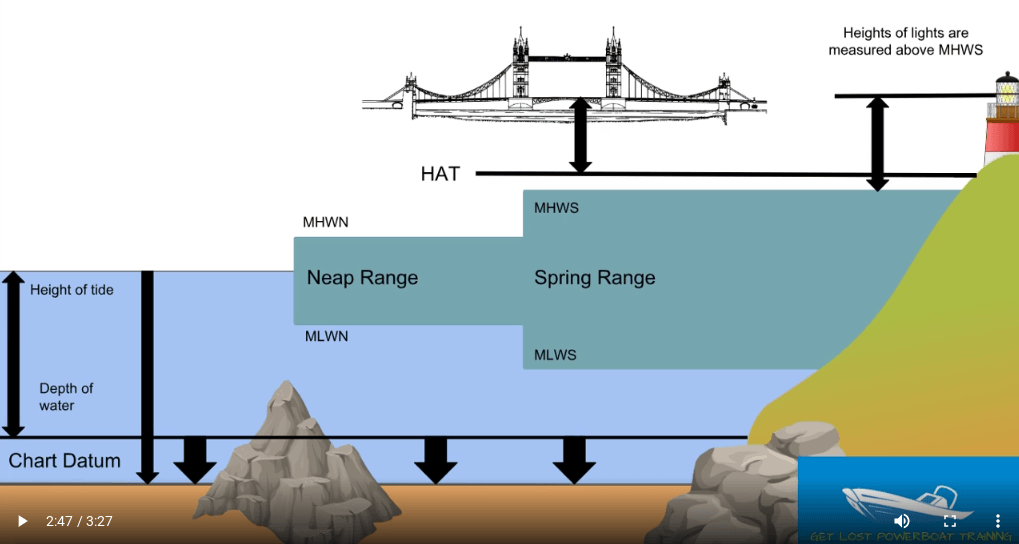
So the next step is to find the height of HAT from the tide tables. Once we have done this we know the height of the bridge and the level above which it is measured.
The thing with HAT though is that it’s not that common. HAT is the highest a tide can be expected to rise. However, the tide often falls short of that level. This means that we often have some extra space. This space comes from the difference between the height of tide (HoT) on the day and HAT.
In order to find this extra bit of space we need to use a tidal curve or an App to get the height of tide. We can then take the height of tide off of HAT. This is our extra bit of space.
HAT – HoT = extra space
You can refresh yourself on tidal curves here if you need to:
How To Use Tidal Curves – watch the video
The Final Calculation
To calculate clearance under bridges & cables then, all you need to do is add the charted height and the extra bit of space together. This will then give you the total space available for a given time on a given day.
In order to see if you will fit under the bridge take the air draft of your vessel from the total space available. If the answer is positive then you can make your way underneath safely. The air draft is the height of the vessel from the waterline to the very top.
Here’s a summary of the steps to take:
- Get the charted height from the chart or almanac
- Get the level of HAT from the tide tables
- Calculate the height of tide (HoT) using the tidal curve (or use an App)
- Take the HoT from HAT to work out the extra space
- Add the extra space to the charted height for total clearance
- Take the air draft of the vessel from the total clearance to see if the vessel can fit
Calculate Clearance Under Bridges & Cables Cheat Sheet
As always, we have produced a free cheat sheet for you to use. It will make the steps super simple and help to keep you organised as well. We find the best thing to do is laminate it. Then you can use it again and again with a dry wipe marker pen or china-graph pencil ?
Please don’t forget to like, comment and share.
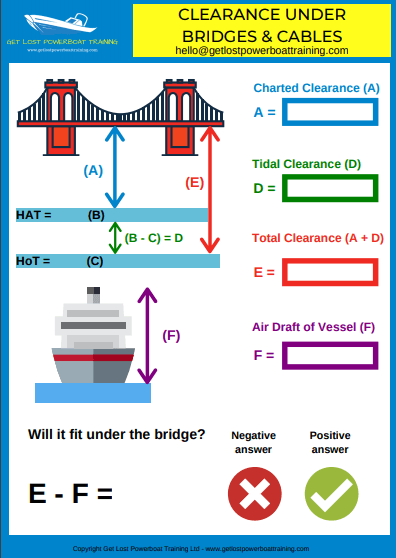
Our complete set of Knowledge Cards are available from our shop
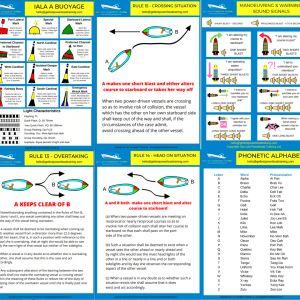
Noel Hutchinson
You might also like.
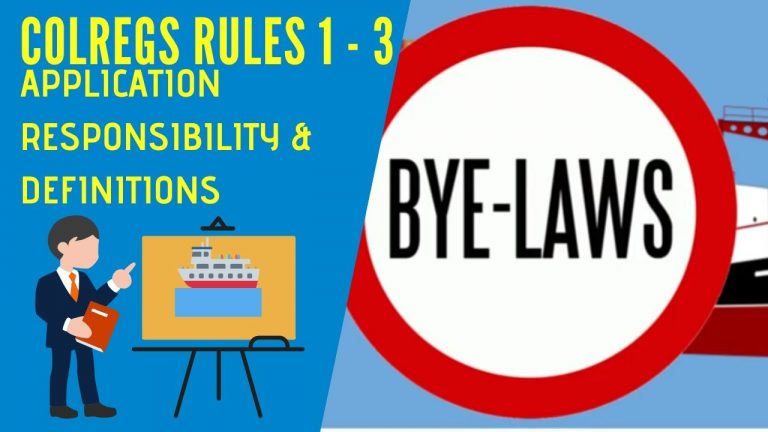
IRPCS for Day Skippers Tutorial Videos
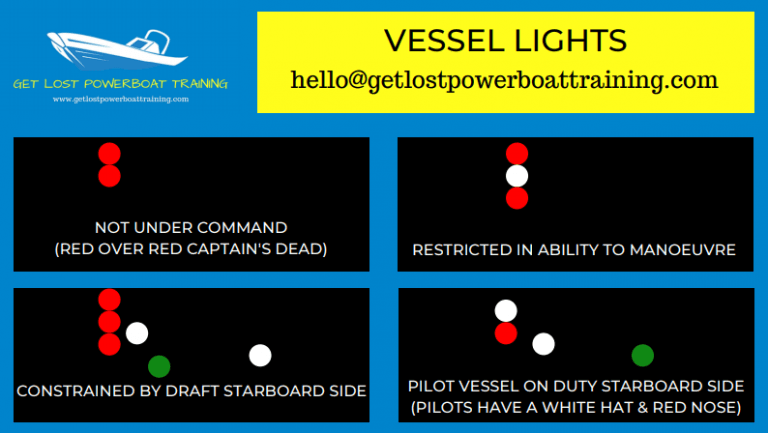
VESSEL LIGHTS – A COMPLETE GUIDE

How Do Lifejackets Work? And How to Wear Them
Leave a reply cancel reply.
You must be logged in to post a comment.
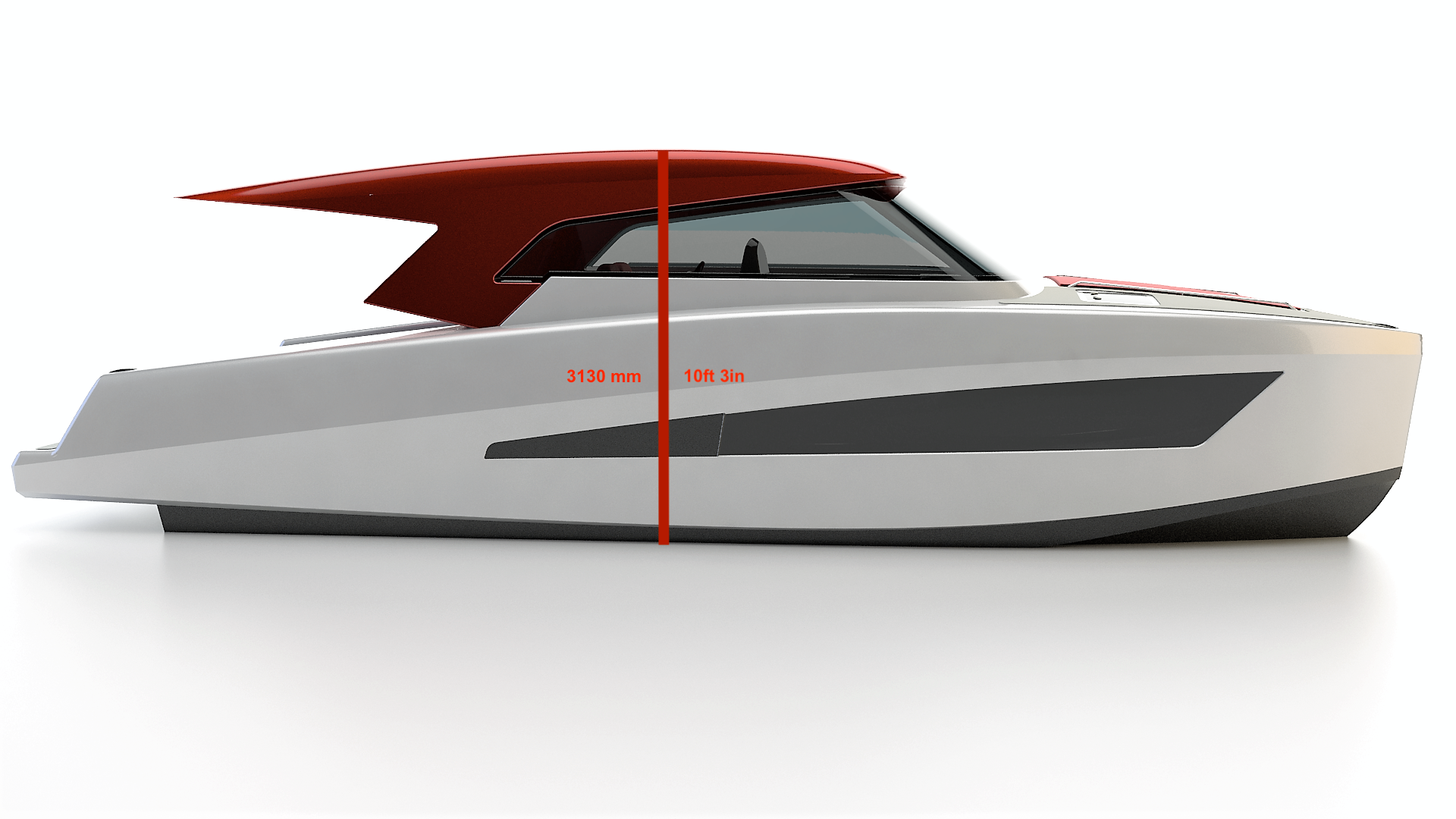
Need a boat to Pass Under a Bridge? When passing under a bridge with your vessel, there are various things that you will need to take into consideration, some of these being the air draft and bridge’s clearance.
Air Draft is a term found on the specification chart for most boats and is a measurement that could be very important when purchasing your boat. A vessel’s draft is the distance measured between the top of a vessel’s highest point to its waterline.
Vertical clearance is the distance above the air draft that allows the vessel to pass safely under a bridge. Failing to consider air draft may result in being unable to calculate a vessel’s vertical clearance during a passage can be catastrophic.
A bridge’s clearance can be found displayed on charts as measured from the surface of the water to the underside of the bridge at Mean Highest High Water, which is the most restrictive clearance. The Mean Higher High Water (MHHW) is the average height of the highest tide recorded at a tide station each day during the designated recording period. It is used to measure the navigational clearance, or air draft, under bridges so that vessels can pass through safely.
For our MAKAI M37 Power Catamaran the air draft, as measured from the waterline to the top of the roof is 3130mm which is 10ft 3in. The loaded waterline is the point on the hulls where the water reaches the boat loaded with fuel, water and other small items such as safety equipment.

If you have any other questions, we are always up for a chat and a challenge! Contact us today to find out more about our vessels and any other enquiries you may have. Follow us on Facebook and Instagram to stay up to date with all the latest news on Makai Yachts.
- Get Newsletter
- Privacy Policy
https://calendly.com/makaiyachts/makai-m37-boat-tour?month=2024-08

My Cruiser Life Magazine
Minimum Water Depth for Boat — All About Boat Draft
If you run your boat in water that is too shallow, you will run aground. This simple fact is obvious to even non-boaters.
But what a complex concept! How do you know how shallow your boat can go? How do you even know how deep the water is where you are, or how deep a boat sits in the water? These are simple questions for experienced boaters, but beginners have a serious learning curve.
As long as there is more water depth than the draft of your boat, you’re good to go. The draft of a boat is a measurement provided by the manufacturer and is how deep it sits below the water.
So let’s take a look at the not-so-simple art of not running aground.
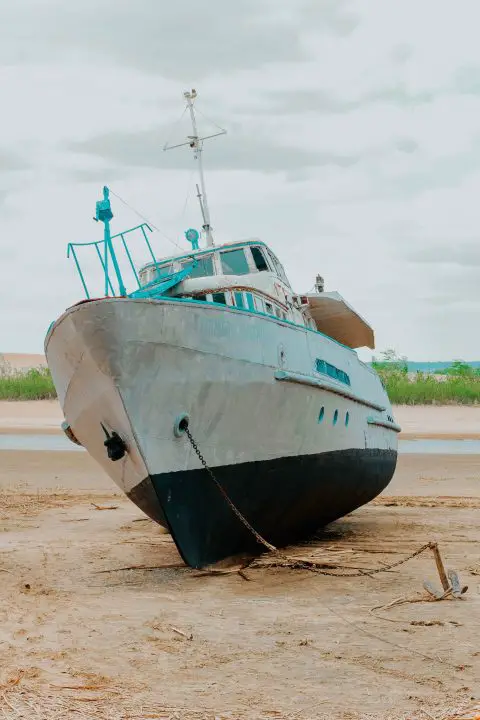
Table of Contents
How do you know your boat’s draft, situational awareness and navigation skill, depth sounders to know actual water depth, minimum vs maximum draft, static vs running draft in shallow water, considerations for a fixed dock, floating dock, and boat lift, keep it afloat, skipper, faqs (frequently asked questions), don’t run aground — know the minimum water depth for boat.
The first step to keeping off the bottom is knowing the minimum water depth for your boat. The boat’s draft is an excellent place to start.
The draft of a boat is how deep it sits below the water. A sailboat with a deep keel has a deep draft—something like six feet or more. Most powerboats have drafts under two feet.
So, how deep does the water need to be for a boat? It needs to be more than the draft. As long as there is more water depth than the draft of your boat, you’re good to go. Of course, operating with only inches to spare isn’t a great idea. A wave or boat wake could come along and pound you into the bottom—and that’s an excellent way to break something.
The amount of extra water depth you have under your keel at all times is a matter of personal preference. Some skippers are risk-averse and start sweating when there’s less than a foot or two of fudge factor. Others are much more relaxed about it, and as long as they’re floating, they’re fine.
A boat’s draft is a published specification, like its length, beam, or height above the water. Interestingly enough, the height above the water is sometimes called “air draft.” It’s a significant number to know when you’re approaching a fixed bridge and need to know if you can make it safely or not.
If you don’t know the draft of your boat, the best thing you can do is search the internet for the answer. It helps to be very specific since the draft is a design feature that changes from model to model. Even within one sailboat model, multiple keels with different drafts might be offered.
If you’ve recently acquired a boat and are trying to figure out her draft, go through all of the records you have. Many boaters keep manufacturer specifications, sales brochures, and other papers on board for decades. You might also find a survey handy—although many times surveyors are doing the best they can with limited information as well.
If you can’t find a reliable answer on the internet, your next option is to go out and measure your draft. This is easily done when the boat is out of the water. Just find the deepest part of the boat, and measure in a straight line downward from the waterline.
If you can’t take the boat out of the water, you might be able to get an idea by going for a swim with a tape measure. Depending on where you are and how clear and warm the water is, this might be easy. Regardless, the results will not be very accurate using this method, but it’s a start.
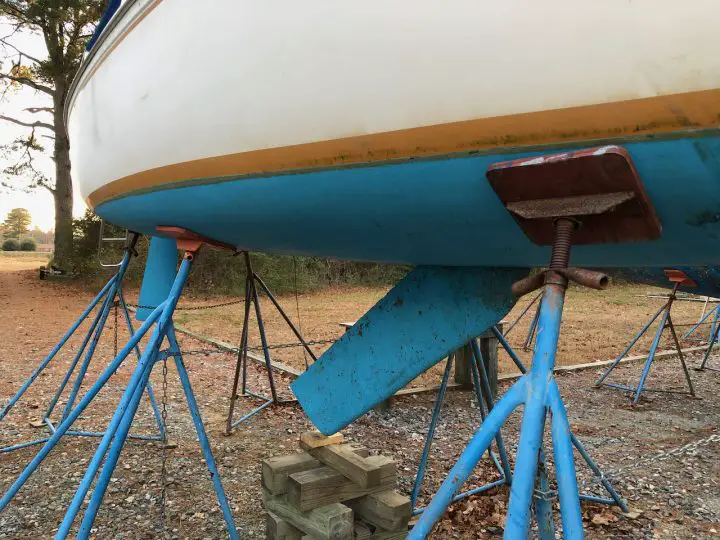
How Do You Know the Water Depth?
Knowing how much water your boat draws is step one. Step two is staying in water that is deeper than that at all times. There are two tools in your skipper’s toolbox to make that happen. First, always maintain situational awareness and navigate carefully. Second, use a depth sounder to check your work to ensure you have enough depth. Here’s how these things work together.
Driving a boat is unlike driving a car. In a car, you know the car will continue rolling and shouldn’t hit anything if you stay in the lanes on the highway. Any obstacles to your path will be clearly visible.
But a boat operates where there are no roads, and the obstacles that could hurt you may be invisible and underwater. To operate safely, you need to use a chart and know the area well. You need to study the chart and know where the deep water is and where any obstacles lay.
Then, you need to ensure that you keep your boat in those deep water, safe areas at all times. Doing that means you can’t just space out and head one way or another. It means you must maintain situational awareness—the knowledge of where you are and what hazards lie around you—at all times.
Situational awareness is a skill that you build up over time. Many tools help you learn it, including charts, chart plotters, GPSs, radars, and navigational markers on the water. But when discussing the art of not running aground, it is impossible not to mention the beautiful thing that is the modern depth sounder.

There are two types of sounders on modern boats—simple sounders and sonars. A sounder is simply a digital depth gauge, while a sonar can display features on the bottom or even fish under that boat. Sonars are also called fish finders. Both can be used as tools to help you keep your keel off the bottom.
Both sounders and fish finders use the same technology. First, a transducer on the hull sends out ultrasonic waves that bounce off the bottom and reflect back to the transducer. Then, the equipment measures how long it takes the sound waves to come back.
The most important thing to know about a depth finder is that it must be calibrated. The equipment can only know the depth under the transducer. If the transducer is already two feet underwater on your keel, then the water will always be two feet deeper water than it reads. If your draft is five feet total, then you’ll be aground when the depth sounder reads three feet.
But you can remove all of these complications by simply calibrating the sounder. You can either tell it to add two feet to everything and then it will read the actual water depth. Then, you’ll be aground when the sounder reads five feet. Since you draw five feet, this makes sense. Keep your boat in places with more than five feet of water indicated on the charts and your sounder, and you’ll be golden.
Some people prefer instead to set their sounder to read the water depth under the keel. In other words, they want the sounder to read zero when they are aground. To do this in the example above, you would calibrate it to subtract three feet from every reading. However, this adds some confusion if you are looking at a chart and want to compare your depth soundings to those shown on the chart. Yours will always be five feet off.
If you have a newly acquired boat, make a point to find the settings on the depth sounder. Figure out what the last owner was doing, and set it in a way that makes sense to you.

- The most versatile handheld depth finder sonar system ever produced
Prices pulled from the Amazon Product Advertising API on:
Product prices and availability are accurate as of the date/time indicated and are subject to change. Any price and availability information displayed on [relevant Amazon Site(s), as applicable] at the time of purchase will apply to the purchase of this product.
Types of Draft on a Boat
The draft of a boat is not a static number. Even on a small boat, the draft will change a few inches depending on how it is loaded. For example, if you have a 16-foot skiff and you load it full of fuel and take three passengers, it will draw a few more inches than it does when you take it out alone.
The same concept is true on most boats. For example, on a massive cargo ship, the draft might change 20 or 30 feet from when the boat is fully loaded to when it is empty.
Some sailboats list minimum and maximum draft numbers. This is the case when a boat has a variable keel. There are several designs, including centerboards, daggerboards, lifting keels, and swing keels . The purpose of these designs is to operate in shallow waters with their keel up while maintaining good sailing characteristics with the keel down.
What is the minimum draft on a boat? The minimum is when all the boards or keels are fully raised, and the boat is lightly loaded. This point is the “best-case scenario”—the absolute least amount of water the boat can float in. On the other hand, the maximum draft is the “worst-case scenario”—the absolute deepest draft it could have with the keel all the way down.
Many powerboats have adjustable sterndrives or outboards that can affect their minimum and maximum drafts. Outboards can often be lifted out of the water—but of course, they cannot operate when they do. Still, outboards are common on flats skiffs that draw only an inch or two of water with the motor up. The operator can then use a pole or oar to maneuver over sand flats.
Powerboats have another consideration, though. A planning hull will lift out of the water when running, meaning that its maximum draft occurs when standing still or static. Static draft refers to this number while running draft refers to how much water it needs when on a plane. Running draft usually isn’t much more than the depth of the motor’s lower unit and a tiny sliver of the hull’s design .
You might be wondering how all of this ties into docks at homes or marinas. Is there a particular depth that you can always be assured of next to a dock? How deep does the water need to be for a floating dock?
Well, the truth is you can never be sure of water depth simply by the presence of a dock. If you’re in a deep draft sailboat , you might be looking at a nice dock made for shallow-draft skiffs. Or you might be looking at a floating dock that a marina installed before the entire place shoaled in.
When approaching a dock for the first time, it’s best to ask whoever is in charge. Dockmasters at marinas should know where the shallow spots are. Make sure they know how deep your draft is, and specifically ask them if there are any spots you need to avoid.
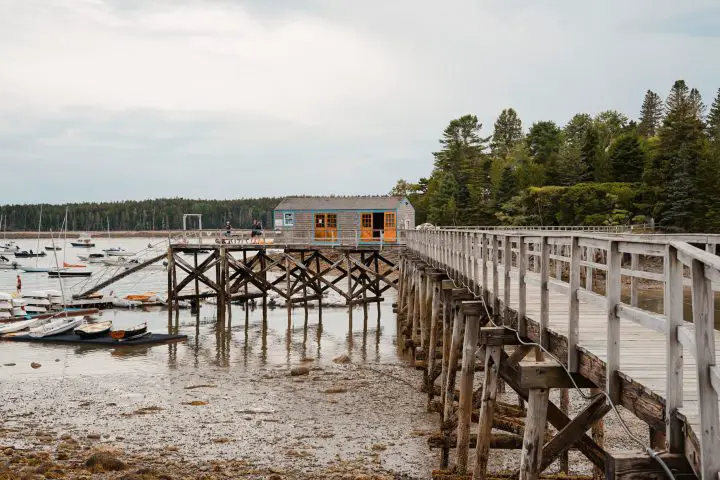
Depending on how fast you do it and what the bottom is made of, running aground can be a minor inconvenience to a deadly accident. Situational awareness, careful operating, and solid navigation are all tools every skipper must focus on to keep themselves off the bottom.
If ever you’re out there, and it’s looking bad, remember this one last piece of advice—go slow. Bad things that happen slowly are usually much less bad than bad things that happen quickly.
How deep does the water need to be for a boat?
Every boat design has a different draft. The draft of a boat is a measurement of how deep its hull and keel sit below the waterline. To float, the water depth must be greater than the boat’s draft. Powerboats usually have drafts of around two feet, while sailboats usually have deeper keels and need six feet or more to float.
How do you know how shallow your boat can go?
To float, you need to stay in water deeper than your draft. Therefore, the draft of your boat is a critical specification that you should know. If you don’t know it, you can physically measure it or look up the specifications for your boat on the internet. The boat’s draft varies, depending on whether you have the motors up or down or if the boat has a retractable centerboard. Weight also matters—a heavier boat will have a deeper draft. If you’re using a depth sounder to figure out how shallow your boat can go, it’s critically important to understand how the sounder is calibrated. The sounder can only measure the depth below its transducer, mounted anywhere on the hull below the waterline. Therefore, it can be calibrated to read depth below the transducer, below the keel, or show actual water depth from the waterline.
What is minimum draft on a boat?
The minimum draft is a specification referring to the least amount of draft a boat can have. In many cases, it is the same number as the maximum draft. In other words, not much on the boat can change the draft. In the case of a swing keel or centerboard boat, the minimum draft refers to the draft when the keel or board is drawn up. Maximum draft refers to the draft when the keel or board is fully extended. On powerboats with stern drives or outboards, the same numbers mean when lower units are fully down versus rigged for shallow running. The minimum draft can also refer to the boat’s draft when lightly loaded. Larger boats ride lower in the water when fully loaded, and therefore have deeper drafts. The draft of a cargo ship, for example, changes by as much as 20 or 30 feet between being empty and fully laden.
How deep does the water need to be for a floating dock?
Floating docks can sit in any amount of water, and most designs allow them to dry out completely. In areas of significant tidal ranges, it’s not uncommon to see floating docks sitting in the mud during low tide and floating in ten feet of water at high tide. Of course, this means that the limiting factor is that of the boats tied to the dock. A floating dock is not strong enough to support the weight of a boat, so any vessels tied to the dock must remain floating.
Matt has been boating around Florida for over 25 years in everything from small powerboats to large cruising catamarans. He currently lives aboard a 38-foot Cabo Rico sailboat with his wife Lucy and adventure dog Chelsea. Together, they cruise between winters in The Bahamas and summers in the Chesapeake Bay.
Leave a comment
Your email address will not be published. Required fields are marked *
Save my name, email, and website in this browser for the next time I comment.

Kawasaki Heavy Industries Admits To Altering NOx Test Results, Exposing Japan’s Marine Engine Scandal

International Maritime Organization Grants Consultative Status To Methanol Institute

Oil Tanker Hit By Houthi Gunfire & 3 Projectiles Catches Fire & Drifts In The Red Sea

Divers Recover 5 Bodies From Sunken Luxury Yacht Off Sicily, 1 Still Missing

What Is Draft or Draught Of A Ship?
Vessel draft or vessel draught.
Vessel draft (draft in the American spelling, draught in the British) is one of the principal dimensions of any waterborne vessel and is defined in technical terms as the distance between the ship’s keel and the waterline of the vessel.
The keel of a ship is the lowest longitudinal support member that helps form the structure of the vessel , while the waterline of any floating body is the location on the hull of a ship where the air-water interface occurs.
The difference between the total height of the vessel and the draft is called the freeboard and is measured from the waterline to the upper deck. Simply put, the draft and freeboard combine to give the height of any vessel.
Along with the length (denoted as L pp or length between perpendiculars) and breadth (denoted as B) of the vessel, the draft (denoted as T) is an important physical quantity that defines both the ship stability and the permissible loads that may be stored onboard without generating any adverse effects.
The draft of most ships varies longitudinally from the bow to the stern, and this results in varying drafts along the length of the vessel. Thus, the accurate manner to indicate the draft of a particular boat or ship is to mention either the location at which the draft has been measured, or whether the ship has an even keel during floating conditions.
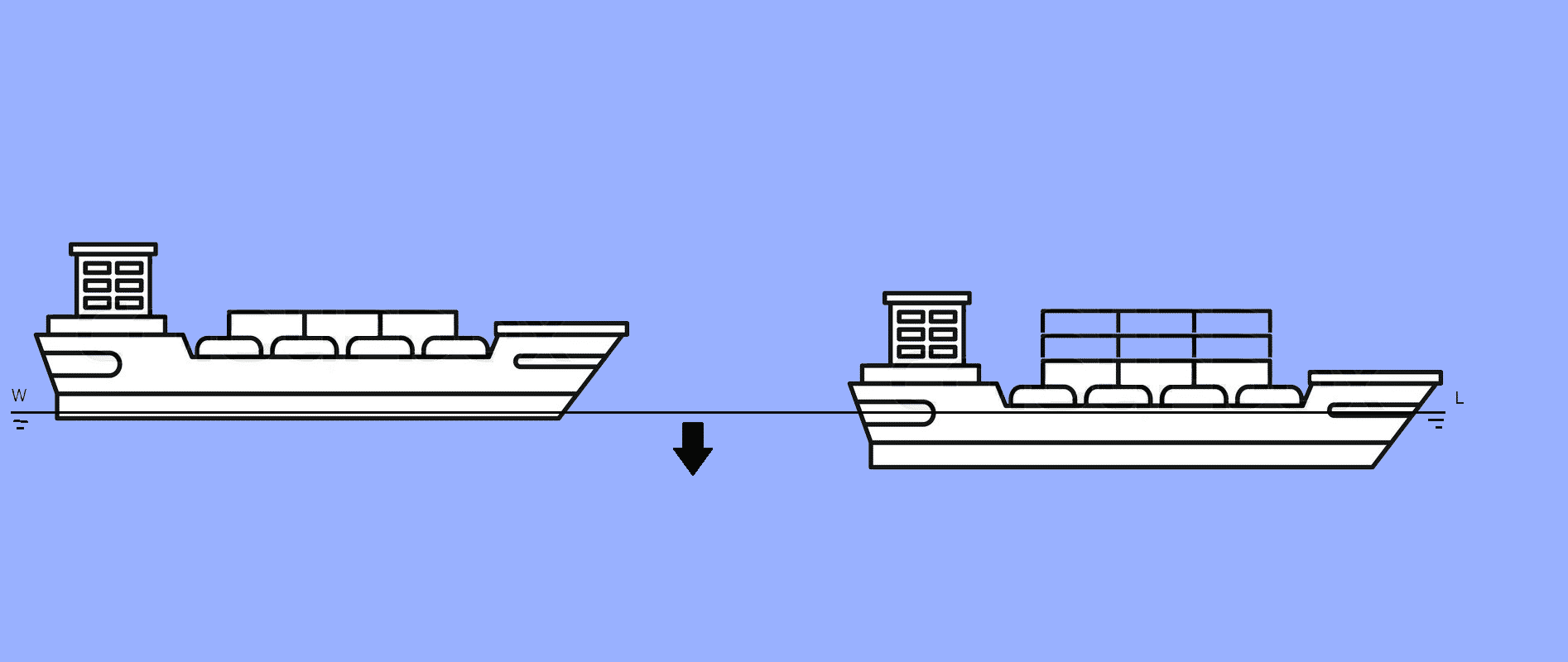
This is of particular significance when evaluating port entry regulations for any vessel since ports are always located in relatively more shallow waters than the surrounding regions.
If the draft of a vessel varies along the length but only a single draft is mentioned in the ship’s documents and stability manual, it is likely that the vessel may capsize during entry to the port due to an unstable equilibrium. Thus, it is necessary to diligently mention all the relevant drafts of the vessel in the required documents.
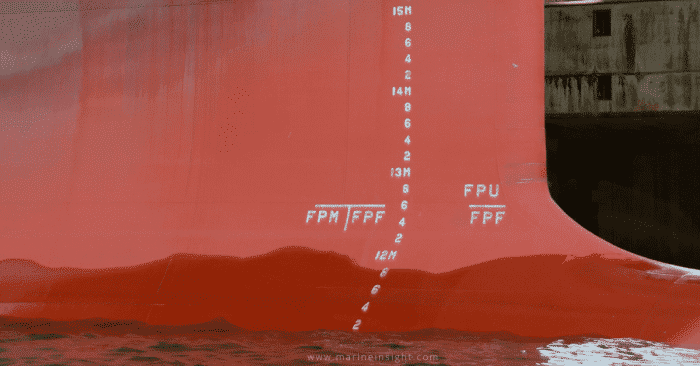
Importance of The Draft of a Vessel
Measuring the draft of any vessel is essential to ensuring a safe balance between the maximum load that can be stowed away on board, and the point at which the vessel is no longer stable.
Shipowners and operators attempt to maximize the onboard loads, so that they can run passenger and container ships profitably while transporting the maximum cargo possible in the least number of round trips required.
However, as the weight of the vessel increases, its draft also increases to support the increased load.
Beyond a certain point, the vessel sits extremely low in the water and is susceptible to flooding when struck by even the slightest of waves. Also, green water, which is the water collected on the deck of the ship due to waves, is prone to icing over the entire hull of the vessel in frigid environments.
The icing of the vessel can result in the engine and another machinery failing, or the loss of stability of the vessel due to the additional weight of ice.
International safety standards set the maximum and minimum drafts for these very reasons and these standards vary depending on whether it is passengers, grain, high-density material, oil or other substances being transported.
They also take into account the weather patterns along the route being sailed through and account for any changes in the physical and chemical properties of the water bodies.
Generally, cargo vessels carry full capacity loads only during certain legs of their journey and are relatively lighter during the other periods. As a result of this lack of weight, the vessel tends to rise in the water and its draft decreases. Such vessels lack integral stability due to the extreme conditions that can be brought about by a simple load addition, removal or imbalance on the deck or other regions of the ship.
Even relatively normal, natural phenomena such as waves or winds can severely compromise the stability of such vessels. Under drastic circumstances, this might even lead to the vessel collapsing.
To prevent this from occurring, inspectors and research teams from various international standard organizations such as the Indian Register of Shipping (IRS), American Bureau of Shipping (ABS), Bureau Veritas (BV), etc. inspect vessels to ensure that they conform to lightship and fully-loaded draft conditions, within a pre-set factor of safety. The data for these values comes from statistical prediction, as well as extensive calculations carried out by simulation software.
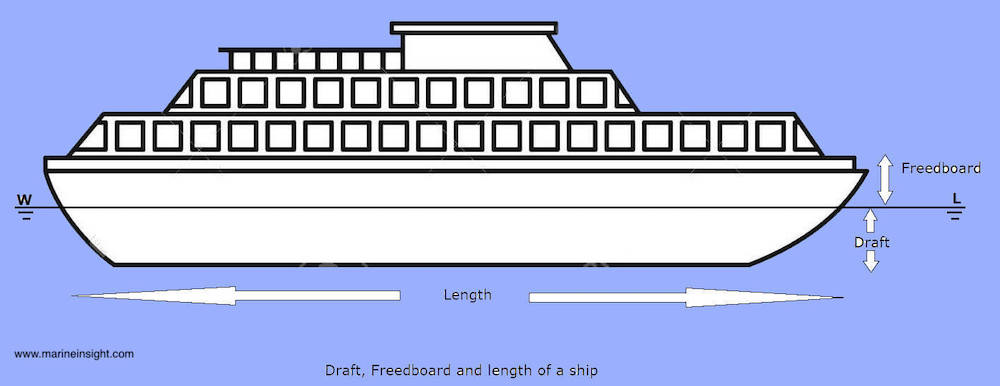
Bonjean Curves and Coefficients of Form
Another important use of the draft of a vessel is in the calculations of the Bonjean curves and certain coefficients of form. The coefficients of form such as the block coefficient (to measure how full the ship is compared to an enclosing cuboid) and vertical prismatic coefficient (to measure how full the ship is compared to a prism of height equal to the draft and cross-section equal to the waterplane area) aid in assessing the form, shape and associated hydrodynamic values of a particular vessel.
These are non-dimensional quantities that have significance in the theoretical study of the performance of the vessel while sailing.
The block coefficient, abbreviated as C(B) is given as:
C(B) = (underwater submerged volume) / (length x breadth x draft of the vessel)
The length mentioned here refers to the length between the aft and fore perpendiculars. The C(B) value can range from 1 for barges to 0.45 for high-speed crafts. Common ranges for these values depend on the source, as well as the vessel manufacturer.
Similarly, the vertical prismatic coefficient abbreviated as C(P) is given as:
C(VP) = (underwater submerged volume) / (waterplane area x draft of the vessel)
The waterplane area refers to the area which is enclosed by the waterline on the hull of the vessel. The C(VP) usually ranges from 0.99 for barges and 0.76 for certain bulk carriers to 0.39 for high-speed crafts.
In both these coefficients, the draft plays a major role in assessing the form of the vessel. Again, the common ranges vary based on the manufacturer and source.
Bonjean curves refer to a set of graphical readings that correlate several quantities with the draft of a vessel. In particular, the cross-sectional area and its moment about the baseline are mainly recorded and measured.
This is generally computed using numerical measures on simulation software and then verified by the hydrostatic testing of the vessel during its sea trials.
Whatever differences are recorded in the two measurements are then rechecked and updated. The underwater cross-sectional area, at a particular location, varies as follows:
Underwater cross-sectional area (A) = Keel T y.dz
The moment of the underwater cross-sectional area of the vessel about the baseline is given as follows:
Moment of underwater cross-sectional area (M) = Keel T z.y.dz
How to Read Vessel Draft?
Draft readings are taken by evaluating the draft measure painted on the sides of the vessel, generally near the stern of the ship. It resembles an enlarged ruler with markings and standard codes written on it. For larger vessels and ships, the draft measure might be painted at multiple locations to make it easily accessible to crew and service personnel.
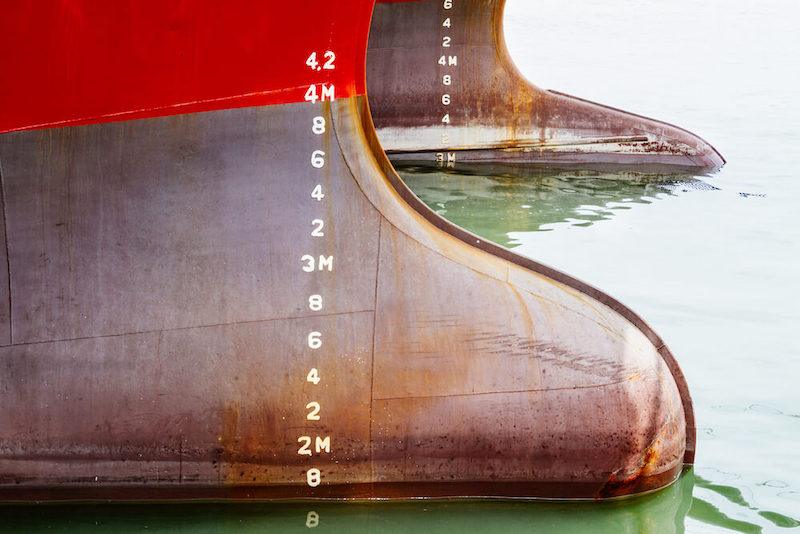
For instance, most bulk carriers and tankers have six visible draft measures located at the fore port side, fore starboard side, midship port side, midship starboard side, stern port side, and stern starboard side. The fore portion of the vessel refers to the front end, the stern refers to the rear and midship refers to a point exactly midway between the length of the vessel.
Port and starboard refer to the left and right sides of the vessel, when it is viewed from the stern to the fore, or in the direction of the forward movement of the vessel.
A reason for taking the draft measures at multiple locations on the port and starboard sides of the vessel is to check whether the vessel has an inherent heel. Similarly, the draft is also measured at the fore and stern side to check whether the vessel has an inherent trim.
Such inclinations can severely compromise the vessel stability in the event of uneven and rough seas. Also, if the ship is inclined beyond a certain point, cargo and machinery might not stay stationary. Thus, it is essential to monitor the difference in the drafts at the port and starboard sides and to compute the inclination of the vessel to check if it falls within accepted standards.
The draft measure contains marker lines and readings with the depth at which the vessel is sitting for a particular load on it. These draft readings taken by using the painted measure are often referred to as apparent drafts. This is because the actual draft listed in the vessel documents may vary due to various factors such as water temperature and salinity.
Surveyors and inspectors use other instruments to measure the exact draft at which the vessel sits since the painted scale only has certain unit measures on it. To do so, the inspection team uses a boat or other small watercraft to sail from scale to scale and record the measured draft.
Draft readings are always taken into account when ship operators decide the load that a vessel will be carrying along a particular route. Occasionally, there might be small differences between the expected reading and what is observed on loading the vessel. Thus, port authorities closely monitor the draft measure during the unloading and unloading procedures, to ensure safety compliance of the vessel.
The theoretical drafts listed in the manuals for a ship are those measured at the perpendiculars during sea trials and testing periods. Vessels have two main perpendiculars that contribute to their associated hydrostatic calculations – the aft perpendicular, running through the rudder stock, and the fore perpendicular, where the hull meets the waterline.
Since these are considered to be sufficiently close to the extreme points of the ship, the drafts measured at these points are taken to be the standard for that particular vessel. Also, the draft is sometimes calculated at the halfway point along the length of the vessel, referred to as the midship draft in technical terms.
Most ships and boats tend to have markings with the maximum and minimum drafts permitted by marine standards painted along with the measure. One such mark is the Plimsoll Line , named after Samuel Plimsoll, an advocate, and pioneer for advanced safety measures to be adopted by ships sailing in treacherous waters.
It indicates the draft at which a certain vessel can float, with a certain load on it, such that it retains its stability. The Plimsoll line is an important tool in keeping the loaded cargo within the safe limits.
A basic reading of the draft measure can often be misleading since vessel hydrostatics and hydrodynamics behave differently based on varying temperature and salinity fluctuations. For instance, higher saline content in water bodies decreases the draft of the vessel due to the higher density of saltwater.
Conversely, boats sailing on freshwater bodies tend to sit deeper in the water. Thus, when setting up the draft measure, it is essential to properly assess the sailing conditions and operating environments of the vessel, and ensure that the permitted drafts satisfy safety requirements based on pre-set parameters.
Calculations Associated with the Vessel Draft
Under ideal conditions, the draft of a vessel can be simply computed by surveying the draft measure painted on the hull. In such situations, the draft remains constant along the entire length of the vessel.
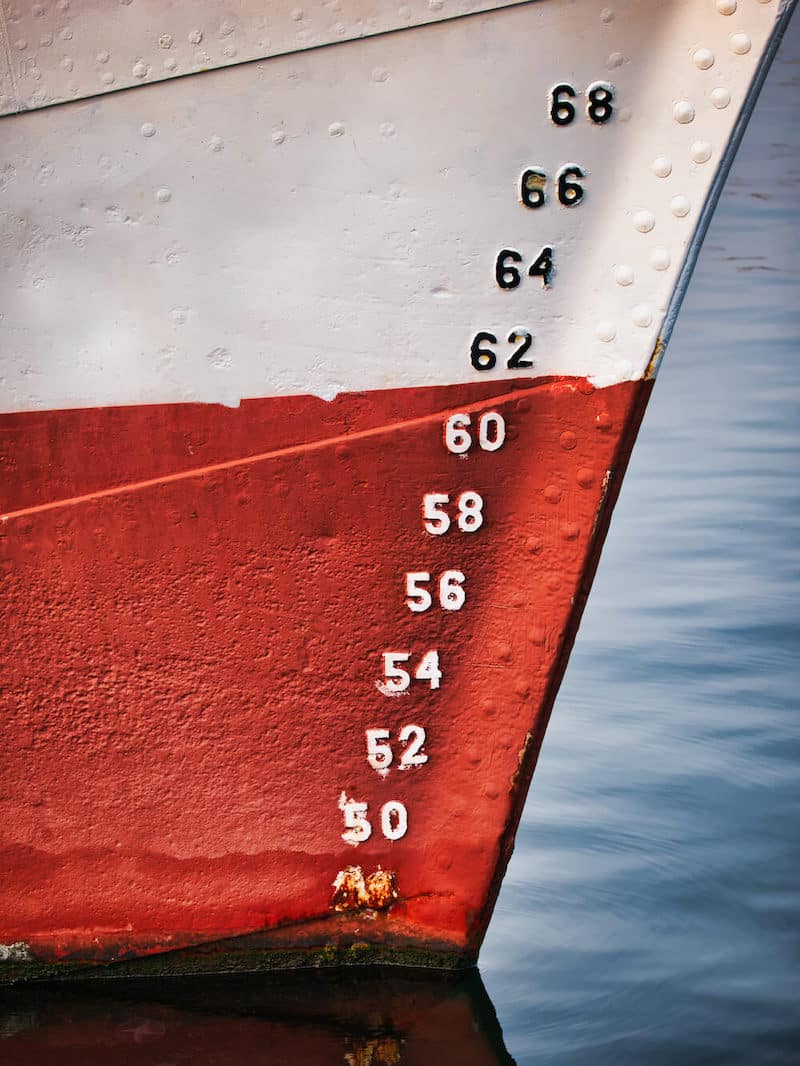
However, in actual operating conditions, the vessel may be asymmetrically loaded both along the length and breadth due to various parameters based on assessments by the ship owners, operators, engineers, and captain. This uneven loading gives the vessel a lengthwise incline (known as the trim) or a sideways incline (known as the loll) and gives varying draft readings when checked using the measure at different points.
In such cases, knowing the overall incline of the vessel is essential to ensuring the stability of both the vessel and the packed cargo. Sliding and untethered cargo in the hold can cause damage to both property and people. The incline based on the draft readings can be computed as follows:
Sideways incline angle (in degrees) = arctan [| (port side draft) – (starboard side draft) |] / (required breadth)
Lengthwise incline angle (in degrees) = arctan [| (fore draft) – (stern draft) |] / (required length)
In this formula, arctangent refers to the inverse of the trigonometric tangent (often denoted as tan -1 ). The required breadth refers to the breadth of the vessel in an upright condition, at the level, hold or deck at which the required incline is to be calculated.
The breadth that is usually taken into account is the breadth at the upper deck, which is one of the standard principal dimensions of any vessel.
Similarly, the required length refers to the length of the vessel in an upright condition, at the level, hold or deck at which the required incline is to be calculated. The length that is usually taken into account is the length between perpendiculars, since this where the fore and aft drafts are measured. This is also another standard principal dimension of a vessel.
Similarly, other important quantities are the mean draft and the midship draft, which are used to compute the overall trim and heel of the vessel. Trim refers to the longitudinal dynamic motion of the vessel, while heel refers to the transverse motion. The mean draft can be calculated as follows:
Mean draft = [(draft at fore) + (draft at stern)] / 2
The midship draft is computed by measuring the draft at the midship marker painted on the side of the hull. If the drafts measured at the port and starboards differ, the average of both their values is taken for quick calculations. The midship draft and mean draft do not have to be necessarily equal.
Based on the type of carrier, they can vary over wide ranges. For instance, high-speed crafts and small motor-powered boats have different values of their mean and midship drafts. However, larger vessels such as tankers, carriers and container ships all tend to have more or less similar values for the two types of drafts.
The accurate way of measuring the draft and recording it in the log and manual of the ship is by mentioning all the locations at which the draft is measured, their readings, as well as certain values such as the inclinations to port, starboard, fore, and stern.
Also, the ship’s stability manual must list out the varying drafts at accepted and general levels of cargo, and how they can vary with the density of water. Lastly, the actual draft readings of the vessel must fall well within the permitted range set by international and national standards organizations.
What are Draft Surveys?
Draft surveys refer to the studies or calculations that utilize the measurement of the draft of a vessel for the main purpose of measuring its weight based on any condition of loading. This is achieved by having these surveys make extensive use of the draft readings and measurements of the vessel, either from the stability manual or from the physical readings of the measures painted on the side of the hull.
The reason draft surveys are required is that computing the weight of large vessels such as container ships and carriers is practically impossible using known methods. In addition to this, companies often want to quickly measure the weight of the cargo they are loading on, without having to individually measure the weight of each package or good. This is where draft surveys come in, by saving both time and money.
By using the existing knowledge of the shape of the vessel from the manual and documents in conjunction with the Archimedes Principle of floating bodies, the weight of the load on any vessel can be computed. According to the Archimedes Principle, the weight of a body floating in water is supported by the volume of water that it has displaced. Essentially, it can be written as follows:
Weight of vessel in kg = (Volume of water displaced by the vessel in m3) x (Density of water in which the vessel currently is in kg.m-3)
Also, the volume of water that has been displaced by the vessel while on the water is numerically equal to the underwater submerged volume of the vessel. The underwater submerged volume can be computed using the Bonjean curves. Thus, the formula for the weight of the vessel can be rewritten as:
Weight of vessel in kg = (Underwater volume of the vessel in m3) x (Density of water in which the vessel currently is in kg.m-3)
The density of water changes from place to place, depending on several parameters. As a result, it is important to measure the density carefully at the given location while computing the weight.
Now, with the knowledge of the weight on the vessel at any given point of time, it is possible to compute the weight of cargo that has been loaded by the ship as follows:
Weight of cargo in tonnes = (Weight of fully loaded vessel in tonnes) – (Weight of empty vessel in tonnes)
Tonnes are the general units of weight for huge bulk carriers and tankers. Since the density varies with location, it is important to measure the empty and loaded conditions of the vessel at the same place, and not from different locations.
In Conclusion
Thus, we can see that the draft of a vessel plays a crucial role, not only in assessing the stability and form of the vessel but also in draft surveys and other useful computations.
The main points to be kept in mind while reviewing the draft of any vessel are that the draft can vary along the length, the draft at a given condition changes depending on the type of water, and the draft has implications on the incline and weight calculations.
By combining the Bonjean curves of a given vessel and its stability manual, a thorough understanding of how the draft affects the performance of the vessel is possible. It is also important to ensure that the values of draft fall well within the pre-set safety ranges to ensure the overall stability of the vessel.
Disclaimer : The information contained in this website is for general information purposes only. While we endeavour to keep the information up to date and correct, we make no representations or warranties of any kind, express or implied, about the completeness, accuracy, reliability, suitability or availability with respect to the website or the information, products, services, or related graphics contained on the website for any purpose. Any reliance you place on such information is therefore strictly at your own risk.
In no event will we be liable for any loss or damage including without limitation, indirect or consequential loss or damage, or any loss or damage whatsoever arising from loss of data or profits arising out of, or in connection with, the use of this website.

About Author
Ajay Menon is a graduate of the Indian Institute of Technology, Kharagpur, with an integrated major in Ocean Engineering and Naval Architecture. Besides writing, he balances chess and works out tunes on his keyboard during his free time.
Read More Articles By This Author >

Do you have info to share with us ? Suggest a correction
Related Articles
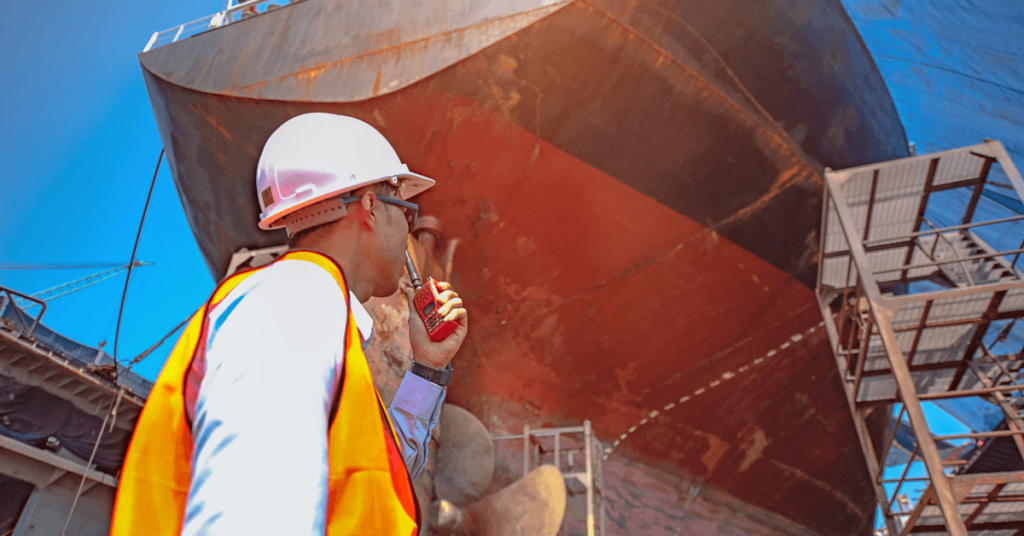
9 New Aspects of IACS Harmonised Common Structural Rules (CSR) For Ships
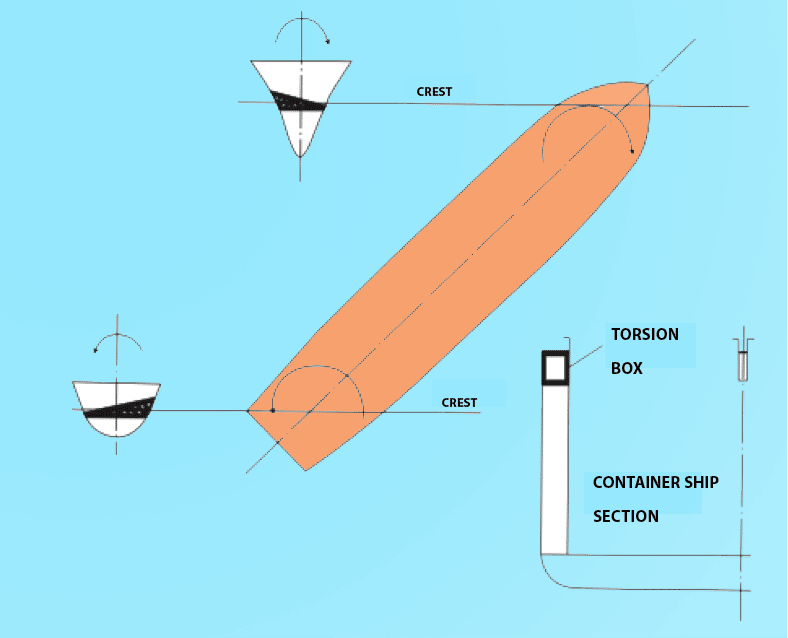
What Is The Purpose Of “Torsion Box” In Ships?
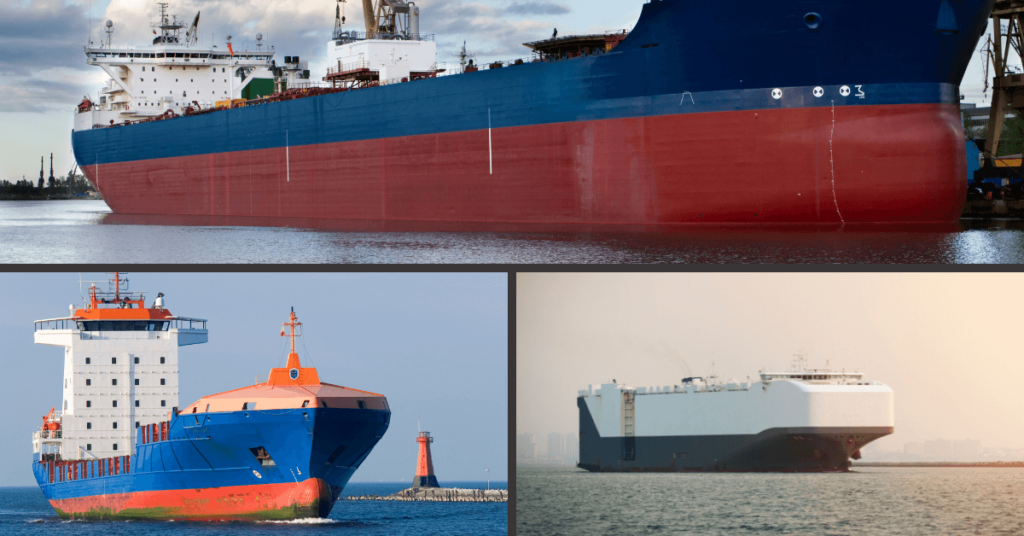
Types of Bow Designs Used For Ships
Daily maritime news, straight to your inbox.
Sign Up To Get Daily Newsletters
Join over 60k+ people who read our daily newsletters
By subscribing, you agree to our Privacy Policy and may receive occasional deal communications; you can unsubscribe anytime.

BE THE FIRST TO COMMENT
One comment.
Excellent article. The Second Link bridge over the Johor Strait is 25 m above high water. Making the Strait a shipping lane is planned. What size ship could use such a navigation channel? I would be most grateful for you input. Thank you (or an email to me.)

Leave a Reply
Your email address will not be published. Required fields are marked *
Subscribe to Marine Insight Daily Newsletter
" * " indicates required fields
Marine Engineering
Marine Engine Air Compressor Marine Boiler Oily Water Separator Marine Electrical Ship Generator Ship Stabilizer
Nautical Science
Mooring Bridge Watchkeeping Ship Manoeuvring Nautical Charts Anchoring Nautical Equipment Shipboard Guidelines
Explore
Free Maritime eBooks Premium Maritime eBooks Marine Safety Financial Planning Marine Careers Maritime Law Ship Dry Dock
Shipping News Maritime Reports Videos Maritime Piracy Offshore Safety Of Life At Sea (SOLAS) MARPOL

What Do Boat Measurements Mean? 11 Terms Explained!
Boat measurements are crucial for maritime safety, efficiency, and compatibility. Navigating these measurements is vital for manufacturers and boating enthusiasts. Proper understanding ensures vessel selection, marina compliance, and safe navigation.
11 Main Boat Measurement Terms
- Length Overall (LOA) : The total length from the bow to the stern. It determines mooring space, marina fees, and navigation in confined waters. For example, a boat with a 30-foot LOA needs a slightly longer berth.
- Length on Deck (LOD) : Measures the hull’s horizontal length, excluding extensions like bow sprits. It provides a more accurate measurement of usable space. A boat might have a 35-foot LOA but a 30-foot LOD due to a 5-foot bow sprit.
- Beam : The width at the widest point, affecting stability and maneuverability. For instance, a boat with a 10-foot beam is more stable but less maneuverable than one with an 8-foot beam.
- Draft : The minimum depth required for the boat to float. A sailboat with a 6-foot draft cannot navigate waters less than 6 feet deep.
- Displacement : The weight of water displaced by the hull, reflecting the boat’s weight when loaded. A boat displacing 5 tons handles differently than one displacing 2 tons.
- Freeboard : The distance from the waterline to the upper deck, indicates how much of the boat is above water. A boat with 4 feet of freeboard handles choppy water better than one with 2 feet.
- Deadrise : The hull’s angle relative to a flat surface. A higher deadrise (sharp angle) cuts through waves better. A boat with a 20-degree deadrise performs better in rough water than one with a 10-degree deadrise.
- Air Draft : The height from the waterline to the highest fixed point. Important for bridge clearances. A sailboat with a 50-foot mast must consider bridge heights.
- Gross Tonnage : Volume measurement for large vessels, based on total internal space. For example, a cargo ship with 50,000 gross tonnage has a large capacity.
- Ballast : Weight added low in the boat for stability. A sailboat with 2,000 pounds of ballast is more stable than one with 1,000 pounds.
- Waterline Length (LWL) : Length at the waterline, affects speed and stability. A boat with a 25-foot LWL is generally faster than one with a 20-foot LWL.
How to Measure a Boat Hull
- Length Overall (LOA) : Measure from the furthest point forward to the furthest point aft.
- Length on Deck (LOD) : Measure the deck length, excluding overhangs.
- Waterline Length (LWL) : Measure at the waterline.
- Beam : Measure the widest part of the hull.
- Draft : Measure from the waterline to the lowest part of the hull.
- Freeboard : Measure from the waterline to the upper edge of the hull.
- Deadrise : Measure the angle between the hull bottom and a horizontal plane.
- Hull Depth : Measure from the deepest point of the hull to the top of the deck.
Coast Guard Boat Length Measurement
The U.S. Coast Guard measures boat length using the Length Overall (LOA) method, from the bow’s tip to the stern’s end, including structural parts but excluding removable attachments. This measurement is crucial for regulatory and safety reasons, influencing boating laws and safety requirements.
- Recent Posts
- The Role of Cargo Ships in Global Trade – August 22, 2024
- Report: Yang Ming’s YM Mobility Explosion at Ningbo-Zhoushan Port – August 9, 2024
- Understanding Drillships: Types, Key Features and Advancements – August 1, 2024
About the author
I worked as an officer in the deck department on various types of vessels, including oil and chemical tankers, LPG carriers, and even reefer and TSHD in the early years. Currently employed as Marine Surveyor carrying cargo, draft, bunker, and warranty survey.
Leave a Reply Cancel reply
Your email address will not be published. Required fields are marked *
Save my name, email, and website in this browser for the next time I comment.
Latest posts

The Role of Cargo Ships in Global Trade
Contents show Volume of Goods Transported by Sea Key Global Trade Routes Economic Impact of Maritime Shipping Types of Cargo Commonly Transported Environmental Considerations Conclusion Cargo ships are the lifeline […]
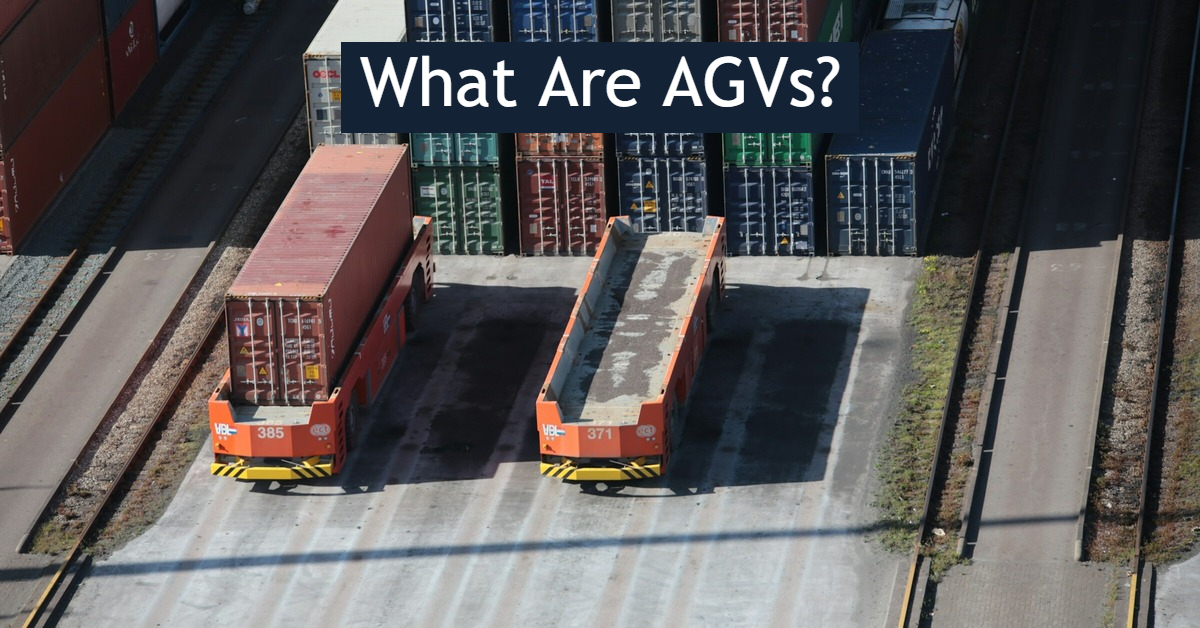
What Are AGVs? Automation Becoming Increasingly Common in Seaports
What are AGVs? Automated guided vehicles can minimize the troubles of manual operations and enhance seaport operations.
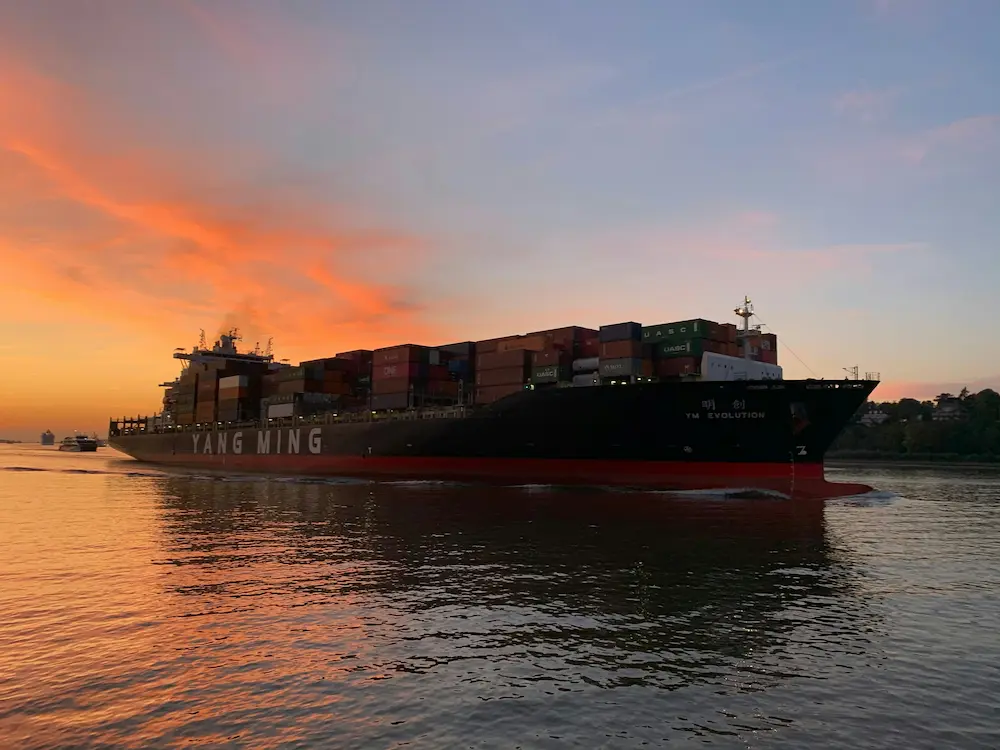
Report: Yang Ming’s YM Mobility Explosion at Ningbo-Zhoushan Port
A massive explosion occurred on the container ship YM Mobility while it was berthed at the Ningbo-Zhoushan Port in China
Cult of Sea
Maritime Knowledge base
The height from the waterline to the highest point of the vessel
The distance from the vessel’s water line to the uppermost point on the vessel, usually the top of a mast or radar tower. When a vessel has to transit areas where there may be overhead obstructions (bridges, power lines, cranes, loading arms, etc.) it is vital to know what its air draft (draught) will be at the time of transit. The air draft of a vessel will vary depending upon the draft of the vessel and its trim.
- Dreadage or Dreading Clause
- Arrived ship
- Below bridges (BB)
- Brackish water arrival draught (BWAD)
- Hog (Hogging)
- Bar draught
Log in or Sign up
You are using an out of date browser. It may not display this or other websites correctly. You should upgrade or use an alternative browser .

Zud Senior Member
Okay you gurus of Yachting, Easiest/accurate method of determining required air draft short of driving under the bridge and measuring the amount torn off of the mast/radar arch. Boat literature makes no sense...20'8" with TV dish removed but the light mast with radar is considerably higher on the boat and would be required/original equipment. How do I get a good measurement from top of radar arch to water level with all electronics removed?? Thanks Zud
olderboater Senior Member
Yes, the literature is useless. Others will have other ideas I'm sure, but here's how we did it. We measured a boathouse height from the water. Pulled the boat in, measured clearance. So our air draft was the height of the boathours opening less the amount we cleared it by. You can do the same under bridges that have accurate markings, note the word "accurate" as some don't, so I'd select more than one to check. We've double checked our boathouse numbers with bridges. Just as you need to know draft at different loads, make sure you take loads into account on air draft. This in addition to knowing it with all different equipment and height permutations.
Capt J Senior Member
Just lay a fishing rod across the hardtop where you can lay the rod verticle with a bobber on it and drop it down till it hits the water, then take it on land and measure it......if something sticks up above the hardtop measure that from the hardtop to the highest point and add to your measurement.
I knew I could count on you guys !!! easiest and as accurate as need be. Will do ASAP
Oscarvan Senior Member
For RV's I use a laser level and large telescoping height pole. (Home Depot or Lowes)
C4ENG Senior Member
Could you use your docking plan or general arrangement drawings to calculate the air draft while using a pair of dividers and the measuring scale on the drawing for the vessel and then add it all up?
Pascal Senior Member
Home Depot sells measuring tapes.... J, Some of us don't fish and may not have fishing gear... You can still measure the boat, first from WL to deck, then the house, then the hard top or whatever. I thin measuring tapes are cheaper than a fishing rod and line, and lead most smart phones come with free calculator app so you can add up the various measurements
Pascal said: ↑ Home Depot sells measuring tapes.... J, Some of us don't fish and may not have fishing gear... You can still measure the boat, first from WL to deck, then the house, then the hard top or whatever. I thin measuring tapes are cheaper than a fishing rod and line, and lead most smart phones come with free calculator app so you can add up the various measurements Click to expand...
not a single fishing rod on this boat ... Hoping to keep it this way
- No, create an account now.
- Yes, my password is:
- Forgot your password?

- Specifications
| BRAND AND MODEL: | Nordhavn Aft Pilothouse 68 (flybridge, widebody) |
| TYPE: | Long range passage maker with raised pilothouse |
| DESIGNER: | Jeff Leishman |
| BUILDER: | PAE/Ta Shing Yacht Building Company. Tainan, Taiwan |
| HULL MATERIAL: | Solid Fiberglass |
| DISPLACEMENT: | 210,000 pounds|95,254 KG |
| BALLAST: | 6,700 pounds|3,040 KG |
| RANGE: | 2,800 NM at 7 knots |
| SPEED: | 8 knots cruise, Max 10 knots |
| LOA: | 68’ | 20.7M |
| LWL: | 63’-2” | 19.2M |
| BEAM: | 20’-4” | 6.2M |
| DRAFT: | 7’-6” | 2.3M |
| D/L: | 278 |
| A/B: | 2.49:1 |
| Cp: | 0.54 |
| AIR DRAFT: | 40’-2”| 12.2M |
| DECK: | Gelcoat with molded in nonskid |
| MAIN ENGINE: | Lugger L1276A 12-liter 6 cylinder 425 HP |
| TRANSMISSION | Twin Disc MG-5114DC with 3.43:1 reduction |
| PROPELLER / SHAFT | 4 blade bronze Hungshen 44”D X 38.5”P | 3-1/2” Aquamet 22HT |
| EXHAUST: | Wet exhaust |
| WING ENGINE: | Lugger L1064A 4.5-liter 4 cylinder 140 HP |
| THRUSTERS: | ABT-TRAC bow and stern thruster 38 HP with 12” propellers. 5 control stations. |
| STABILIZATION: | ABT-TRAC model 370 actuators with 12 square foot fins. Control in Pilothouse and Flybridge. |
| ELECTRICAL: | 60 Hz US style 50 amp and 100 amp connections. |
| SHORE POWER: | Single 100 amp single phase in transom (for ships service and HVAC). Single 50 amp in transom (for HVAC). Single 50 amp on foredeck (for ships service and HVAC). |
| GENERATOR 1: | Northern Lights M864W3 25kW 60hz 240 volt 108 amps located in Engine Room |
| GENERATOR 2: | Northern Lights M844LW3 20kW 60Hz 240 volt 83 amps located in Lazarette |
| INVERTERS/CHARGERS: | (3) Mastervolt 24/230 volt 4kW inverters (Lazarette)|(4) Mastervolt Mass 24 volt/100 amp chargers (Lazarette)|(1) 12 volt charger (Pilothouse) |
| BATTERIES: | House/emergency start batteries (12) Lifeline AGM 1,530 Ah at 24 volts. Main engine start batteries (2) Lifeline AGM group 4D 255 Ah in series. Wing engine start batteries – shared with one generator – (2) Lifeline AGM group 31 105 Ah in series. (1) Lifeline AGM group 31 12-volt electronics battery in Pilothouse and Mastervolt DC-DC converter for redundant 12 volt power source. |
| LIGHTING: | All interior and exterior lights throughout with exception of ER secondary fluorescent and select decorative sconces are LED. LED Lopolight navigation lights |
| WATER MAKER: | (2) Sea Recovery Aqua Matic 1400 water makers, 1,400 GPD each |
| CLIMATE CONTROL: | Dometic Cruiseair tempered water (chillers) system consisting of (4) 30,000 BTU compressors and (10) individual air handlers with auxiliary heat strips. SMXHT displays with remote TWLC control in companionway. Note: Limited units can be operated from inverter system while underway.| Kabola diesel boiler for ship’s heat and hot water| Heat exchanged hot water heater. |
| MACHINERY EQUIPMENT: | Alfa Laval fuel centrifuge|100 amp shore cord|105 gallon|397L gasoline tank with Fill-Rite transfer pump, 30’ gasoline hose and fill nozzle| Delta-T engine room ventilation system| PAE designed Oil change system with Oberdorfer pump|(2) 62 gallon| 235L oil storage tanks. Dual fresh water pumps for house water| Mighty Pure MP36C water sterilizer. |
| WINDLASS: | Maxwell VWC 4500 hydraulic. Programmable windlass controllers and rode counter located in Pilothouse and Flybridge. |
| GROUND TACKLE: | Rocna 150KG galvanized anchor. 600’ of ½” galvanized HT chain. |
| CAPSTAN: | (2) Maxwell VC2200 24V vertical capstan cockpit warping winches. |
| CRANE: | Steelhead CT2500 3-axis crane. Boom extendable to 20’. |
| TENDER AND OUTBOARD: | 2013 18’ Pioneer center console with 130 HP, Evinrude E-TEC outboard motor. Garmin chart plotter, Garmin VHF with Comrod VHF Antenna, Garmin AIS. 2008 10’-6” AB Lammina Inflatable with 2013 Yamaha 15HP 2-stroke outboard engine. Oars. Note: Portuguese bridge deck has a built-in 110 gallon| 416L gasoline tank. |
| NAV/COM BRANDS: | Furuno | FLIR | ICOM | Hatteland |
| ENTERTAINMENT: | 55” Samsung flat screen TV on lift in Salon | 42” Samsung flat screen TV in Master Stateroom | Bose 1-2-3 system with amplifier and Bose cube speakers in Salon. |
| STATEROOMS: | (3) staterooms. California King in Master stateroom, Queen in starboard VIP, and (2) Twins in portside guest. Captain’s berth in Pilothouse. |
| BEDDING: | Master stateroom California King is Stearns and Foster, VIP Queen is Tempurpedic, Port twins are custom. |
| HEADS: | (4) Headhunter Royal Flush Superbowl (electric freshwater toilets). No moving parts in commodes to replace. |
| SHOWERS: | Master stateroom, port and starboard guest staterooms, swim platform. |
| LAUNDRY: | Separate Bosch Axxis clothes washer and clothes dryer. |
| GALLEY: | GE 22 cubic foot double door refrigerator | Viking dual fuel range with electric oven and 4 burner propane cooktop | Fisher Paykel double drawer dishwasher Broan 15” trash compactor | (1) double drawer Vitrifrigo refrigerator/freezer|(1) double drawer refrigerator/freezer/refrigerator | 5 cubic foot beneath Pilothouse berth. |
| INTERIOR WOOD: | Interior wood: Vertical grain Teak with satin finish. |
| INTERIOR COUNTERS: | Stone in galley and all heads |
| INTERIOR UPHOLSTERY: | Ultraleather on pilothouse helm chairs and settee. |
| INTERIOR FLOORING: | Teak and Spruce hardwood in Salon, Pilothouse, stairs, and all companionways. Carpet in staterooms, Limestone in master and both guest heads. |
| BILGE PUMPS: | (1) Rule 3700GPH bilge pump with Ultra Senior bilge switch, (2) hydraulically driven 180GPM Pacer pumps with manifold, (4) Edson manual bilge pumps with handles, (3) Whale Gulper bilge pumps with Ultra Senior bilge switches |
| TANKAGE: (approx.) | – |
| FUEL: | (3) main fuel tanks and (1) supply tank. Port main 910 gallons | 3,445L. Starboard main 910 gallons | 3,445L. Forward main 1,100 gallons | 4,164L. Supply tank 110 gallons | 416 L. Total Diesel capacity = 3,030 gallons | 11,470L. |
| HOLDING BLACK: | 225 gallons|852L (fiberglass) |
| HOLDING GRAY: | 150 gallons|568 L (fiberglass) |
| FRESH WATER: | 600 gallons|2,271 L (fiberglass) |
| ADDITIONAL EQUIPMENT: | (4) Stidd helm chairs with drink holders and Simrad joy stick at PH and FB levels | Central vacuum system|15 million candlepower searchlight |
| SAFETY: | ACR Globalfix 406 EPIRB with integral GPS category 1 | 6-man Givens life raft | Life ring | All USCG Safety equipment |
| PHOTO DATE: | Images are a representative of a Nordhavn 68 previously listed by JMYS. |
| NOTE: | Note: This information is representative of a typical Nordhavn 68. |
Want to learn more about Trawlers?
Please join our email list to receive information on Trawler Listings, New Videos, Trawler News and Up-coming Events
Sign Up Today!

*]:inline-block [&_a]:hover:opacity-70 [&_strong]:font-normal [&_a]:transition-opacity">Hassle-free cruising on Arksen 85s. Enquire about fractional ownership, offering lower costs, flexible adventure itineraries. FIND OUT MORE
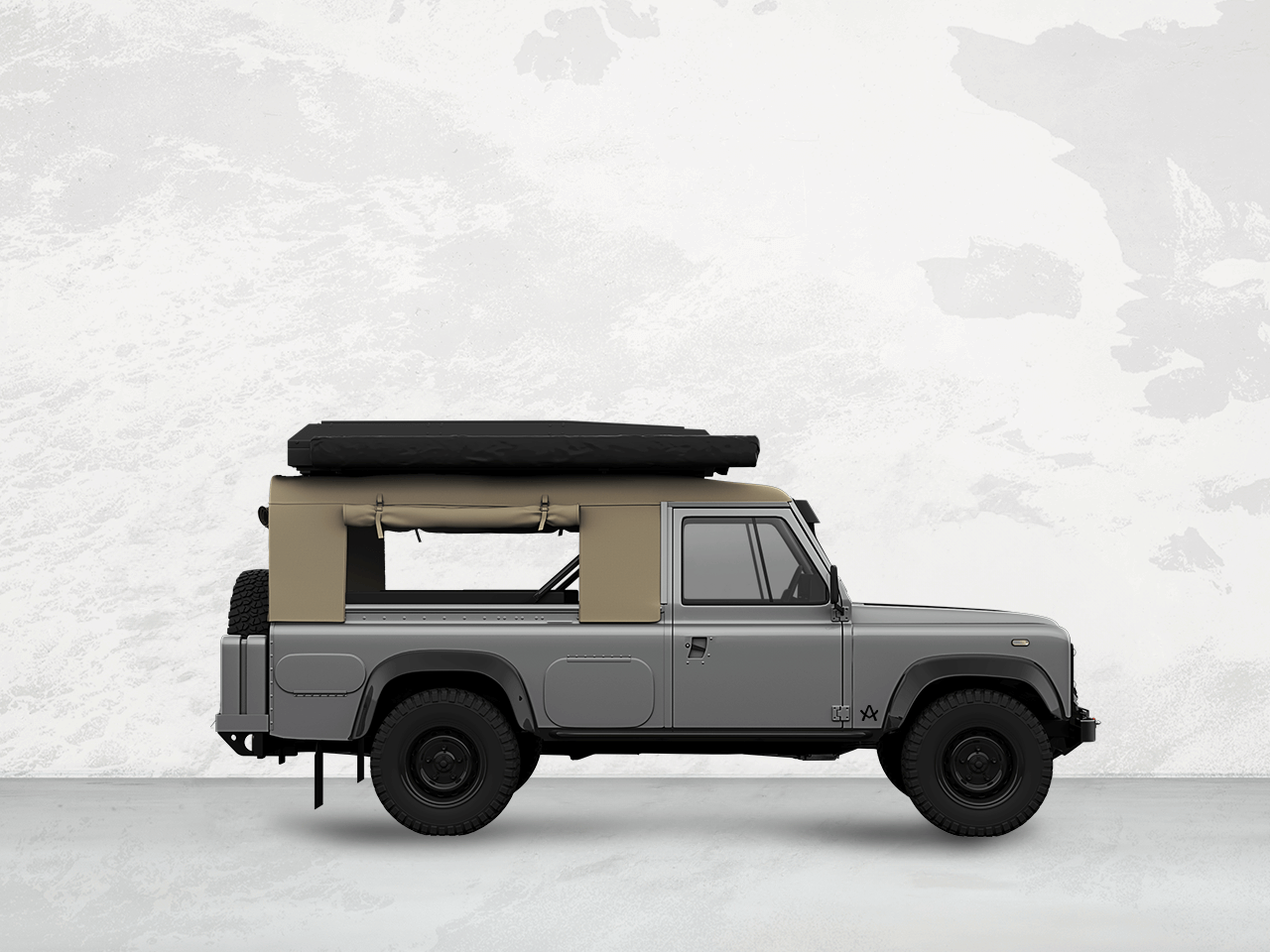
Arksen P110 Perentie - Project Ituri is born
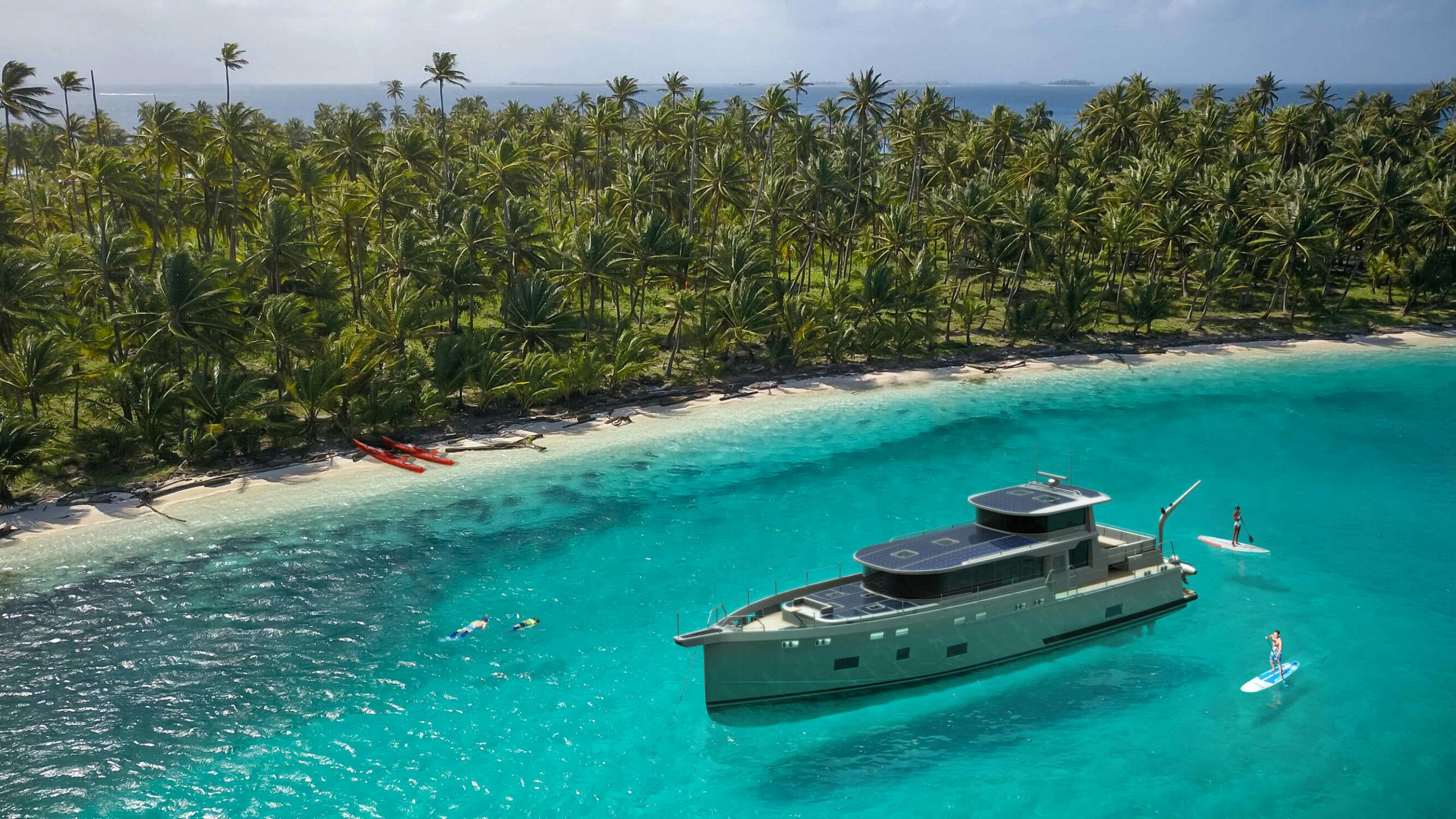
Arksen 65 Limited fixed air draft for extended exploration

Specifications
- Length overall 20.46 m (67' 1")
- Range 3,700 nm
- Cruising Speed 9 knots
- Construction Aluminium (40% recycled content)

Whether you’re moored up in the heart of an historic city or enjoying the quiet of an anchorage all to yourself, the aft deck dining and lounging area is the perfect spot to enjoy that sundown cocktail as you take in the sights. The raised exterior helm position with optional glazing not only provides exhilarating views of whats to come but also protects those on the aft deck from getting wind swept
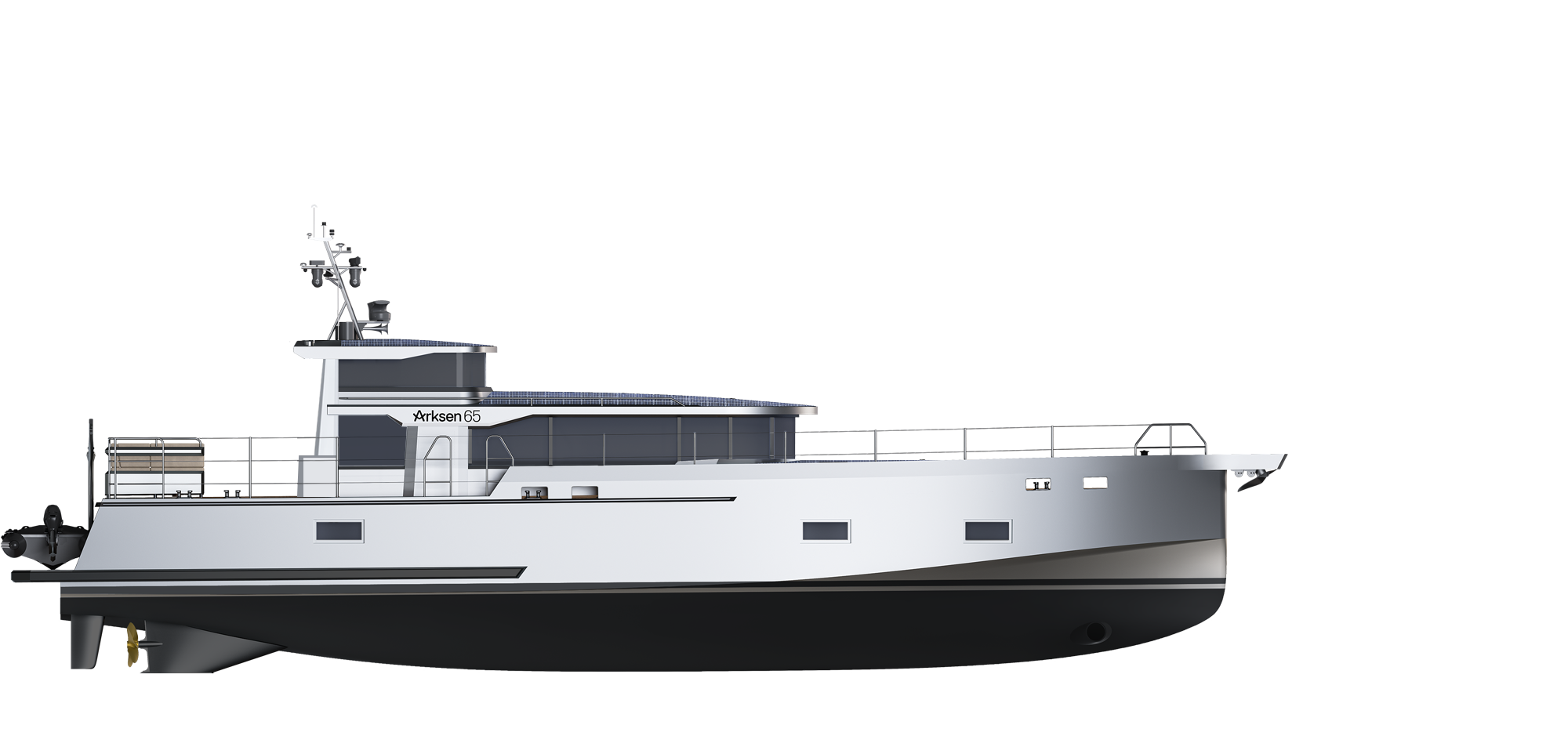
Interior comfort
As with the rest of the Arksen Explorer fleet, the 65 enjoys the same great views from wraparound main deck windows. Whether you’re relaxing, cooking or dining you’ll be surrounded by a stunning vista. On the lower deck there are three further cabins; a full beam master forward and two twin cabins midships and aft.
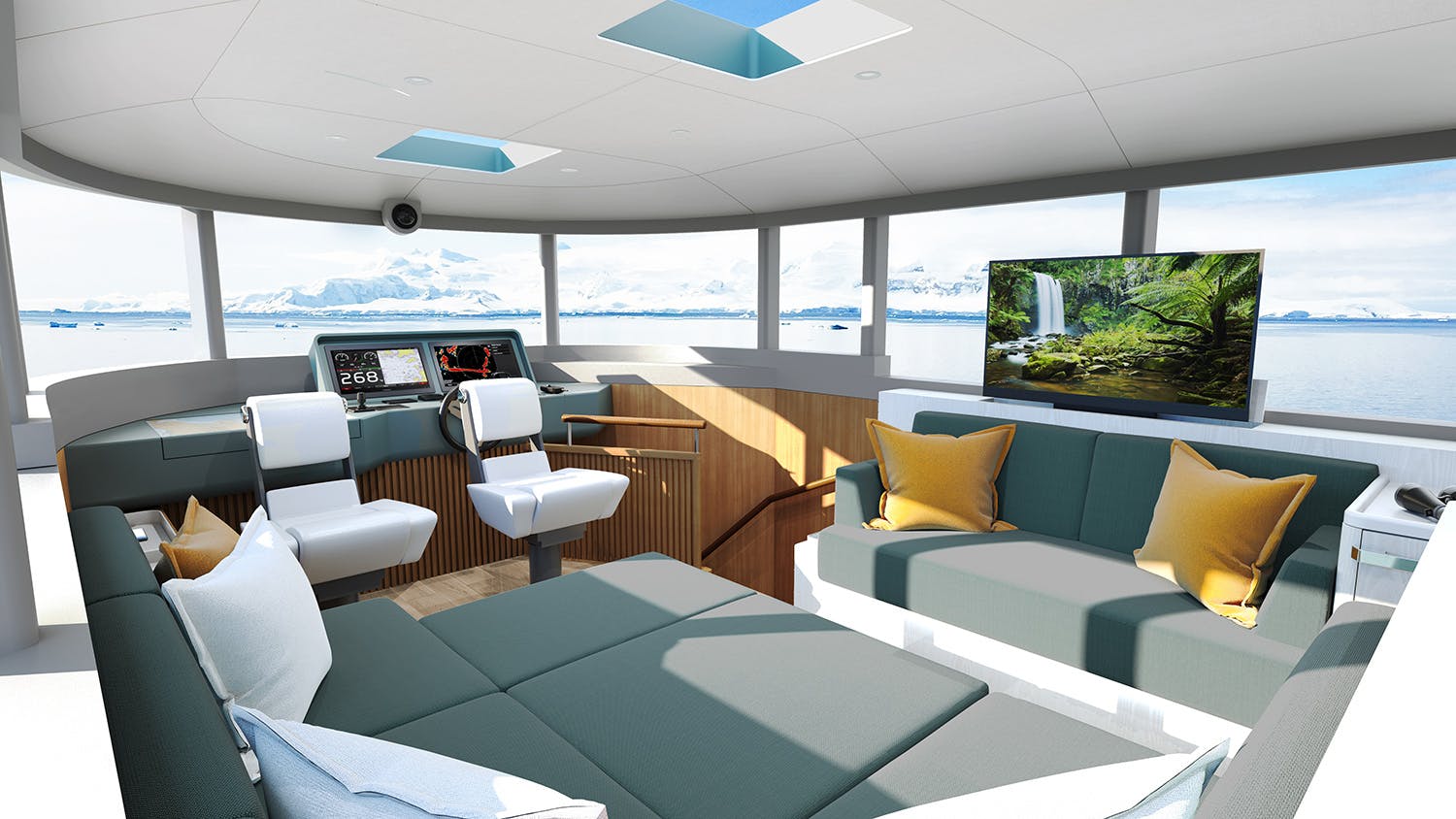
Clever systems for stress-free cruising
A big part of the Arksen philosophy is that a vessel’s systems need to be very carefully thought-out and set up. Ease of maintenance and repair are key. Arksen uses meticulous 3D design to maximise the interior space while maintaining ease of access to systems for maintenance and repair is key on this size of vessel. All of these practical considerations are cleverly hidden away behind beautiful furniture and panelling.
Other Explorer Series
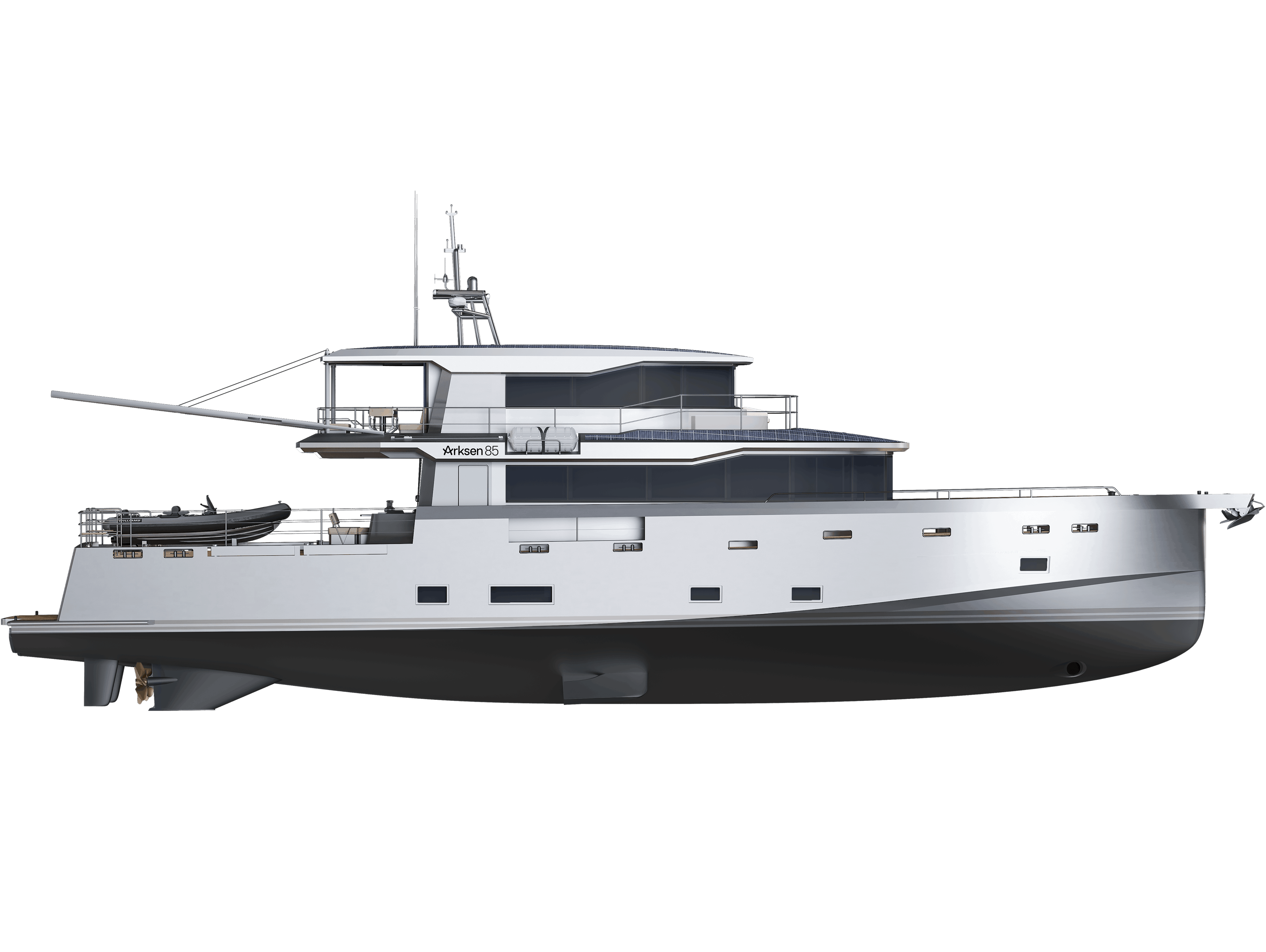
Enquire about the Arksen 65
Latest from the journal.
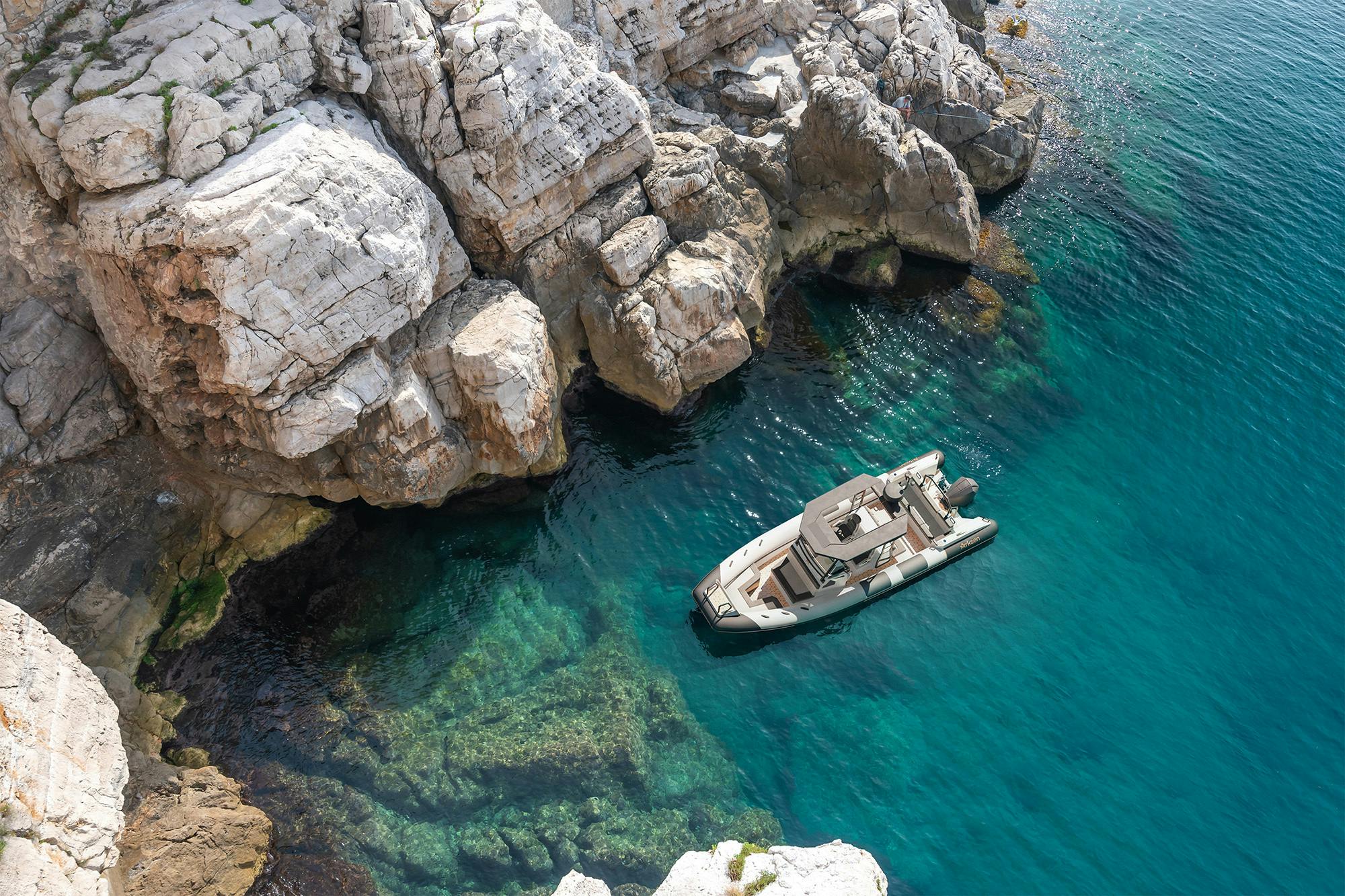
Arksen selects Garmin as preferred supplier

Arksen enters the Channel Islands

COMMENTS
Here's the formula for that: Air Draft = Height of the Vessel - Aft Draft. or. AD = HoV - Da. You should be able to find the height of the vessel in the Ship's Particulars, which is readily available inside the wheelhouse. It's there because the officer in charge of finding the air draft is the Second Mate.
Air draft (draught) is a term used to describe the distance from the top of a vessel's highest point to its waterline. Vertical clearance is the distance in excess of the air draft that allows a vessel to pass safely under a bridge or object. The consequences of failing to consider air draft and to properly calculate a vessel's vertical ...
Air draft (or air draught) is the distance from the surface of the water to the highest point on a vessel. This is similar to the deep draft of a vessel which is measured from the surface of the water to the deepest part of the hull below the surface. However, air draft is expressed as a height (positive upward), while deep draft is expressed ...
The one absolute and immutable dimension for the Great Loop is an air draft of 19 feet, 6 inches, in order to clear the fixed Chicago railroad bridge. Of course, you can also complement your Loop experience with air drafts of 17 feet (downtown Chicago) or 15 feet, 6 inches (the Erie Canal). Air draft is arguably the most important dimension ...
The Final Calculation. To calculate clearance under bridges & cables then, all you need to do is add the charted height and the extra bit of space together. This will then give you the total space available for a given time on a given day. In order to see if you will fit under the bridge take the air draft of your vessel from the total space ...
Fleming Yachts Construction (HK) Ltd. F55 Specification. 1 22 Jan 2019 . Version #72 (WEF 55-251) Fleming 55 - Pilothouse Motor Yacht ... Draft: 5' (1.52m) Air draft (to top of radar arch): 16' (4.88m) Displacements . Minimum Operating Condition: 67,801 Lbs. (30,754kg) Loaded Condition: 80,178 Lbs. (36,368kg) Main Engines: Twin Cummins QSC ...
Air draft is the total distance from water level to the top of the tallest equipment attached to the mast head. When going under bridges, it's important to ...
How tall is your boat? Join our classes in Vero Beach - https://www.captainchrisshipstore.com/collections/ask-captain-chris-at-a-seminar
A vessel's draft is the distance measured between the top of a vessel's highest point to its waterline. Vertical clearance is the distance above the air draft that allows the vessel to pass safely under a bridge. Failing to consider air draft may result in being unable to calculate a vessel's vertical clearance during a passage can be ...
The first step to keeping off the bottom is knowing the minimum water depth for your boat. The boat's draft is an excellent place to start. The draft of a boat is how deep it sits below the water. A sailboat with a deep keel has a deep draft—something like six feet or more. Most powerboats have drafts under two feet.
A ship's draft/draught is the "depth of the vessel below the waterline measured vertically to the lowest part of the hull, propellers, or other reference point". [1] That is, the draft or draught is the maximum depth of any part of the vessel, including appendages such as rudders, propellers and drop keels if deployed. [citation needed] The related term air draft is the maximum height of any ...
Vessel draft or vessel draught. Vessel draft (draft in the American spelling, draught in the British) is one of the principal dimensions of any waterborne vessel and is defined in technical terms as the distance between the ship's keel and the waterline of the vessel. The keel of a ship is the lowest longitudinal support member that helps ...
Air Draft: The height from the waterline to the highest fixed point. Important for bridge clearances. A sailboat with a 50-foot mast must consider bridge heights. Gross Tonnage: Volume measurement for large vessels, based on total internal space. For example, a cargo ship with 50,000 gross tonnage has a large capacity.
A. Air Draft. < Back to Glossary Index. The height from the waterline to the highest point of the vessel. The distance from the vessel's water line to the uppermost point on the vessel, usually the top of a mast or radar tower. When a vessel has to transit areas where there may be overhead obstructions (bridges, power.
Meri has an air draft of 63ft 4in and her keel draws 5ft 4in, so going all the way on the ICW was certainly an option. We'd also made two crossings to the Bahamas and back that winter, which meant we now had some offshore experience as well. Still, we were not yet comfortable with making a long passage, so on this trip we decided to restrict ourselves to offshore jumps of less than 250 miles.
Fountain Pajot Alegria 67. Sailing yachts over 60 feet in length commonly have drafts that prevent them from entering many shallow areas, but the Fountain Pajot Alegria 67 manages to keep draft below 5.6 feet. The catamaran design does the trick, while providing a massive 2,156 square-foot footprint and the ability to carry 1,400 square feet of ...
As to air draft, most flybridge models will have a problem with 17'. Now some do have or can be modified to have folding arches so they could be lowered and clear. Standard most bridges are in the area of 19-20'. Even the shortest often have electronics on top that make their air draft more.
T-foil rudder max draft 11ft 6in (3.5m), max span 9ft 10in (3m) Canting foils max draft 16ft 5in (5m), foil wing span 13ft (4m) Crew number 11. Max crew weight 2,116-2,182lb (960-990kg) Photos courtesy of The America's Cup. January 2019. The design rule for the 36th America's Cup is the most audacious yet: a 75ft foiling monohull that will ...
Nordhavn Yachts Trawler Models. Skip to content. Menu. Home; Models. Nordhavn Fleet; New Deliveries; ... AIR DRAFT: 29' 7" / 9.02 M: Learn More » Nordhavn 68 LOA: 68' / 20.73 M: LWL: 63' 2" / 19.25 M ... 68' 4" (20.83 m) BEAM: 22'- 5- 3/4"" (6.85 m) DRAFT: 6'-8" (2.03 m) @ DWL: DISPL.: 227,800 LBS (103.55 METRIC TONS) @ DWL: Learn More ...
The American Tug 435 is a highly capable yacht. Take her anywhere; explore the inside passage to Alaska, the California coast, or head to Mexico, cruise the Great Lakes, the Intracoastal Waterway, the Bahamas, or complete America's Great Loop. ... AIR DRAFT: Flybridge model (varies with options) up to 22'8" with arch up - flybridge model ...
Easiest/accurate method of determining required air draft short of driving under the bridge and measuring the amount torn off of the mast/radar arch. Boat literature makes no sense...20'8" with TV dish removed but the light mast with radar is considerably higher on the boat and would be required/original equipment. ...
WING ENGINE: Lugger L1064A 4.5-liter 4 cylinder 140 HP. THRUSTERS: ABT-TRAC bow and stern thruster 38 HP with 12" propellers. 5 control stations. STABILIZATION: ABT-TRAC model 370 actuators with 12 square foot fins. Control in Pilothouse and Flybridge. ELECTRICAL: 60 Hz US style 50 amp and 100 amp connections.
The new Arksen 65 has been designed to be able to travel anywhere that her larger sisterships can, and provide the space and capacity for a couple, family or small group to live and voyage comfortably for extended periods. Due to the limited fixed air draft, the Arksen 65 also has the ability to explore Europe's canals with their low bridges.